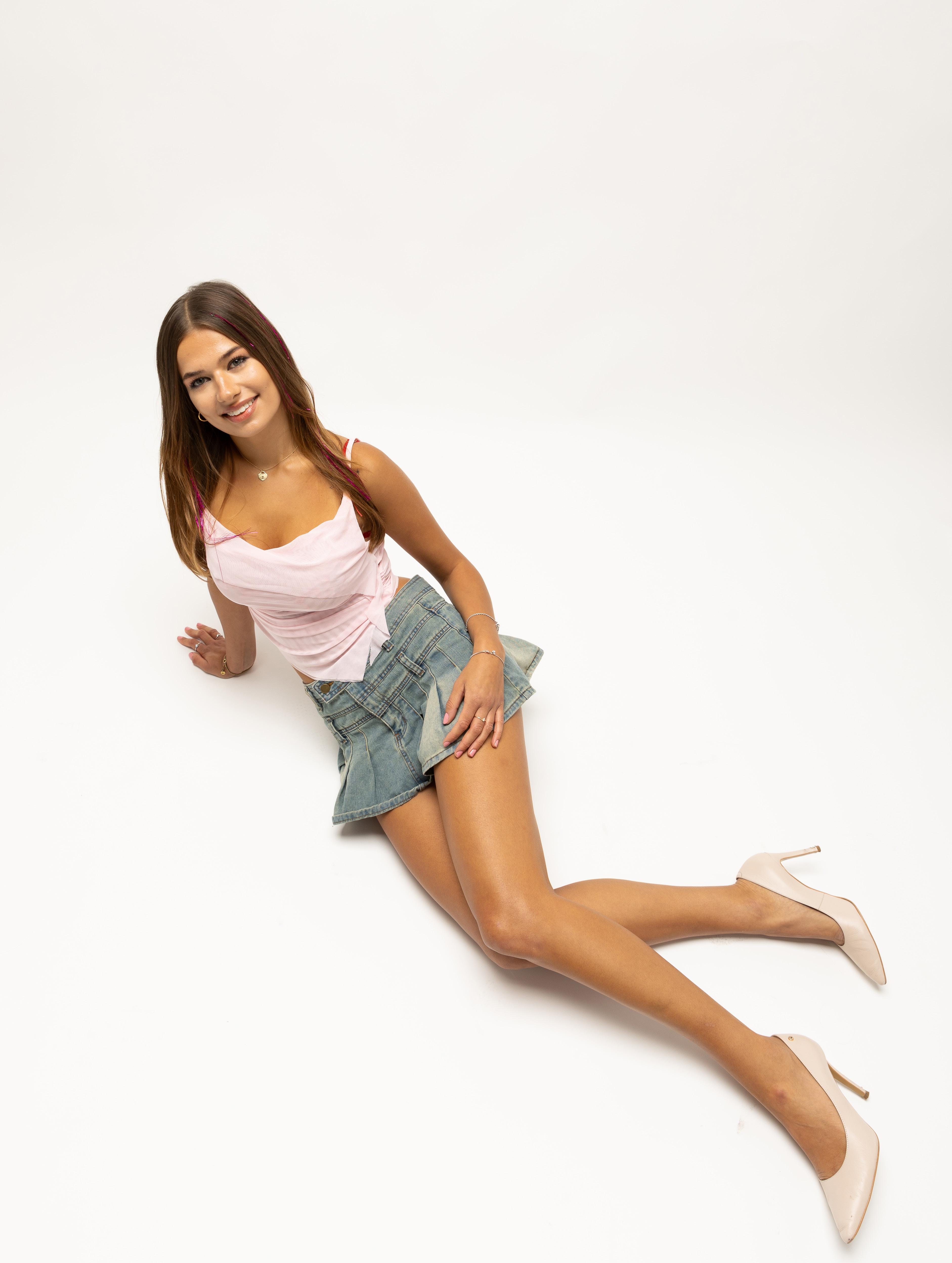
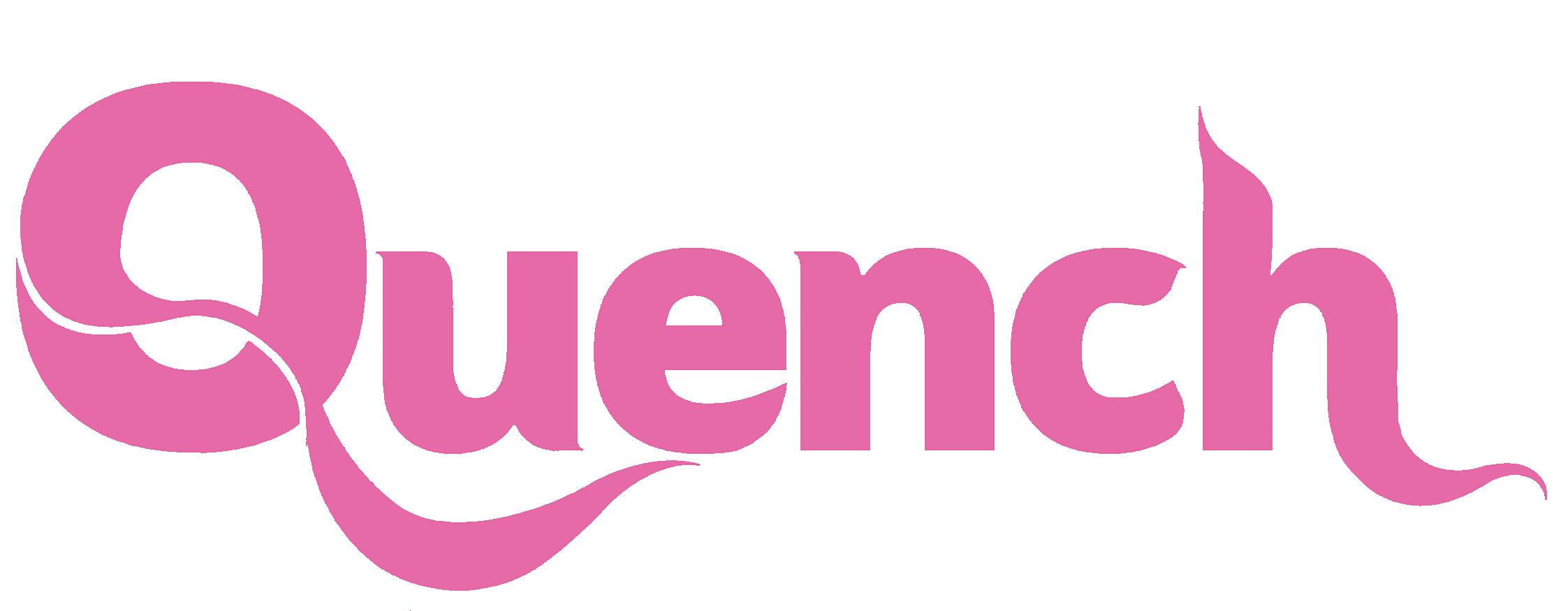



Where to begin with this issue?! POP came to me very randomly in May. I was having a Michael Jackson craze at the time and thought POP would be amazing for my first issue. I had a lot of fun thinking of issue themes and ultimately deciding on POP. It felt right and quite relevant. Pop music is at an all-time high and maybe even low at the same time. Rising pop stars like Addison Rae and Sabrina Carpenter are dominating the music industry and I really wanted to tap into that aesthetic and make it my own. There are obvious nods to pop icons in this issue like Britney Spears and Andy Warhol to give you that nostalgic feeling we all crave.
Something that came to mind when I was imagining this issue was my childhood bedroom. Growing up in the 2010s, I was obsessed with Top Model magazines. I loved them so much and remember begging my mum to take me to the shop to get one every month. They always had detachable posters and I had a full wall just of Top Model posters. It was a bittersweet feeling taking them all down when I entered my teenage years and felt like they were too childish. This issue is very loosely inspired by their magazines, with a nod to my obsession with their posters, with our own Quench poster on pages 24-25. During freshers fair and immersion day, it was very rewarding hearing about how people had taken past issues to decorate their rooms. A secret sense of anticipation hit me and I wanted to spoil the upcoming poster.
During the creative process of this issue, I kept thinking back to a year ago when I was a Culture editor. It was my first time being in a role of this sort and getting real writing experience. Pitching my first articles seems like a fever dream now and I’m so grateful that I get to create an issue that represents me so much.
I know many first years have contributed to this issue. It’s made me reflect on my time as a first year in uni. I was extremely lost and homesick and felt like I made the worst decision by coming to Cardiff all the way from the south of France. I wasn’t happy and didn’t recognise myself in anything or anyone. I lost pieces of myself along the way. I can now say that being a part of Quench has made me find myself and my confidence again. Moving away from home, especially from overseas, can be a humbling experience but finding the right people and right communities is so important in keeping track of yourself. I am so happy to be a part of Quench this year and to be working with such incredible individuals. To Molly & Jemima, I have already gained so much respect and love for you both and I can’t wait for this year at Quench together.
This issue is very much about finding yourself and what works for you. With tips on colour analysis, student entrepreneurial advice or fresher bedroom decor guides, the editorial direction of this issue is all about fun and what makes you POP. The current worldwide climate we live in calls for some happiness and colour and I hope this issue brings some sort of joy to you, readers. I’d also love to shout out the contributors, section editors and designers who worked so hard on this issue. It was their first Quench issue for most and they did a beyond remarkable job. I am overall really proud of the direction of this issue and hope everyone who reads it gets a sense of happiness and positive pop feeling to begin this academic year right!
-Charlotte, Editor-In-Chief
As I go into my third and final year here at Cardiff, I feel incredibly privileged to be a deputy editor for Quench Magazine. Having contributed to the publication since my first year, Quench has been a vital part of my university experience. The themes of the past issues have prompted some thoughtful conversations and reflections, and have been a most welcomed addition alongside the many academic essays.
So, it feels incredibly serendipitous that our first issue revolves around POP. Pop is such a fluid word, search it and you’re given a multitude of definitions, focusing on one meaning in this magazine would be far too restricting and makes very little sense. Featured articles cover music, art, sweets, fashion, trends and relationships to name a few. When I think of pop I think of my childhood, idolising celebrities in magazines and music videos, posters of my favourite musicians, and distinctive album covers on CDs littered around the house. I think of the extravagance and chaos of Hollywood and the music industry. I am then reminded of the cyclical nature of popular culture, how trends takeover mainstream media for a month or a year and then quietly slip away, only to be seen in a few decades time. Modern blockbusters feature music that’s so ‘retro’ and heroes of past music scenes face resurgences. Think of Kate Bush who has always been cool, yet thanks to Stranger Things, she has gained a new legion of fans, for whom Running Up That Hill occupies a significant place in their memory.
Pop does this, it encapsulates past and present and merges them into something fresh yet evocative. Social media is now engrained in popular culture, and one could not become an idol, an influence or a symbol without it. Social media showcases how exciting it is to live in a time of such creativity, completely original art flourishing, or a blend of the new and the fixed ideas. This smoothly introduces the work of our brilliant contributors, and of course our talented new design and editorial team. I hope that POP inspires you to create something fabulous, or engage with something you’ve been meaning to for a while now…
I am immensely excited for the year ahead, creating some inspiring and magnificent issues with a fabulous team alongside me, but for now, pop to the shops, pop open a can of fizzy pop and settle down for Quench Magazine Issue 208…POP!
Upon first considering the theme ‘pop’, images of bright pink bubble-gum, drinks cans overflowing with fizzing soda and upbeat tunes tinkering from a 2000s style radio comes to mind. Bursts of colour, Britney Spears-esque photos and popular culture allusions appeared to be the perfect theme for my first issue as Deputy Editor; full of the brightness and excitement that I anticipate for the year of Quench to come.
When I was eight years old, I taught myself to blow bubbles with strawberry hubba-bubba chewing gum, whilst listening to the recently downloaded Now That’s What I Call Music album on my hot pink Ipod shuffle. I had matching headphones which would’ve been held tightly to my ears as I ran into the front garden to draw dusty blue flowers onto the pavement with sticks of multicoloured chalk. Popular culture, popular music, popping colours and sounds have always been intrinsic to my childhood and are tangled up endearingly in my memories. On the surface, it may appear to be a short, abbreviated word characterised by the likes of the mainstream and ‘popular’ core of culture. However, in this issue, it has proven to be multifaceted, provoking thought, debate, nostalgia and interest.
As I begin my final year at Cardiff University, it feels all too easy to get caught up in the wave of looming post-grad anxieties: where will I be this time next year? What will I be doing? Will I be far away from my friends and the community that I have built here in Cardiff? In a time, which begins to bring to light the impermanence of this period of my life, working for Quench, particularly alongside Charlotte and Molly, has already given me the grounding that I needed. Beginning a year of finality, now feels less final, as I’ve embarked upon a new journey which allows me to channel my own creativity into such a welcoming spacefull of wonderful artistic individuals. This year is bursting and popping with opportunity.










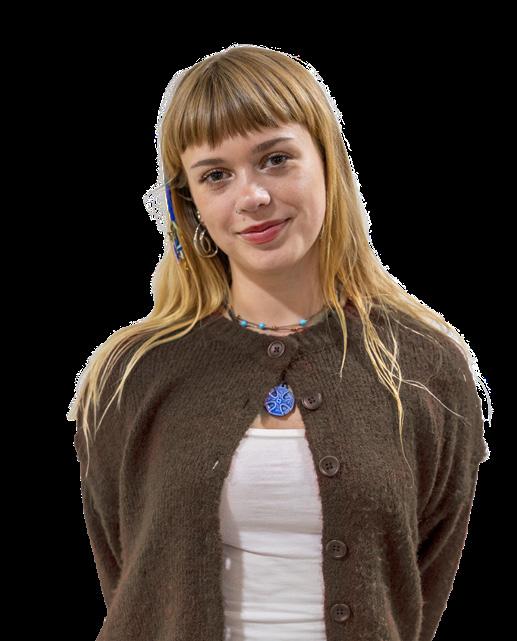














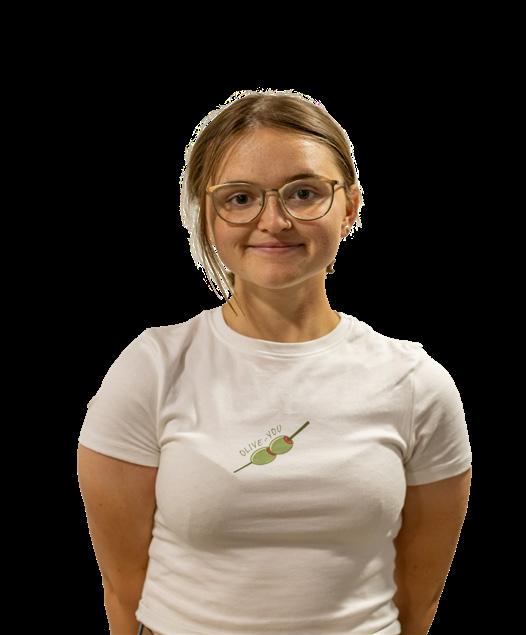
















curated by Charlotte, Molly and Jemima
Britney Spears - ...Baby One More Time
Carly Rae Jepsen - Call Me Maybe
Katy Perry - Teenage Dream
Jamelia - Superstar
Taylor Swift - You Belong With Me
Katy Perry - I Kissed A Girl
Lady Gaga - ARTPOP
TLC - No Scrubs
Destiny’s Child - Bills, Bills, Bills
Gwen Stefani, Eve - ... Rich Girl
Madonna - Vogue
Hugh Grant - ... PoP! Goes My Heart
Michael Jackson - Billie Jean
Natasha Bedingfield - Pocketful of Sunshine
Gwen Stefani - Cool
ABBA - Gimme! Gimme! Gimme!
Spice Girls - Wannabe
PinkPantheress, Ice Spice - Boy’s a liar Pt.2
Dua Lipa - Dance The Night
Beyonce, JAY-Z - Crazy In Love
Kesha - TiK ToK
Miley Cyrus - Party In The U.S.A
Lady Gaga - Poker Face
Nelly Furtado - Maneater


17 Britpop’s 2025 Encore: From Wonderwall to Bitter Sweet Symphony
18 Pop Rocks and Ring Pops: The taste of a memory
Popty-Ping! Your next go-to student meal is ready!
Pop, Drop and Scroll: Things that pop up on your feed
What’s So Popular About Pop Art?
Movies That Make You POP Out of Your Seat
Pop Goes the Heart: Colours in cinema
36 ‘Call Me Artist, Call Me Idol’; How K-Pop is shifting the cultural narrative 37 Tik-pop: How is Tiktok affecting music’s trend cycle?
38 Not to Burst Your Bubble... but are you in a pop-up relationship?
Pop Fiction: The fast fashion of the literature world
Don’t Judge a Book by its Cover: Covers that Pop and others that flop
Trends That Pop Up Again and Again...
28 A Guide to Colour Analysis: What colours make you POP?
40 The Summer of Love 2025: Important people ‘popping the question’
Here Today, Gone Tomorrow: pop-ups around the globe 43 Popping on Holiday? 2025’s most popular holiday destination
Pop, Fizz & Bubbles: Interview with Kasey Swithenbank
Models featured: Maya Jacob
Ella Lewis-Davidson Julia Klos
Reverie Yugen, Nails by Anusha and Nenko
Design by: Molly James Special thanks to Timber Yard Studio, Lucky Cow Vintage and ArtSoc.
Photography by: Kas Bayat
What is it about the pop art movement that specifically appealed to you and made you both adopt that style?
Nathan: I think when learning how to draw as a kid, I’d always practice by copying my father’s album covers. I vividly recall a Whitesnake and Iron Maiden drawing…then things like my favourite TV shows at the time, Power Rangers and Buffy The Vampire Slayer. I think pop culture has just always been a safe haven to me. In school I had a tricky time with some bullies, and I’d lose myself in my art, and the escapism of music and TV. Studying Andy Warhol then came along and I realised that it all just clicked into place.
Antony: For me it wasn’t a case of adopting pop art as a style, it was a natural progression from my early years as a graffiti artist who then started experimenting with stencils and then painting portraits with bright coloured 2D outcomes. I was always intrigued by bold and simplistic product advertising and flat striking imagery in art. My artist name is Consumersmith and if Consumerism is the toast, then pop art has always been the butter in my eyes. I’ve always been fascinated by taking images I’ve created or already existing images and painting them in new ways which convey both art, decoration and something that feels like a visual product.
Nathan, your work is famous for using unusual, often household objects to create portraits, what first inspired you to design art using this method?
I’d been uploading sketches of my work onto YouTube for a few months when it was first about to BOOM… I was getting a little complacent with the style and I read a newspaper headline about Simon Cowell that said “you either love him or hate him” and I instantly thought of Marmite. Could I paint Simon with Marmite? That’s weird surely… BUT I did! And that video gained a lot of attention. I naturally progressed into using popular everyday items to release to the subject matters… often silly and fun, sometimes poetic and even pack a punch with a powerful message. Art does that, it speaks when words can’t. Before I knew it I couldn’t walk down the aisle in a supermarket or pass a skip on the street without thinking “I could make art with that”, it’s limitless.
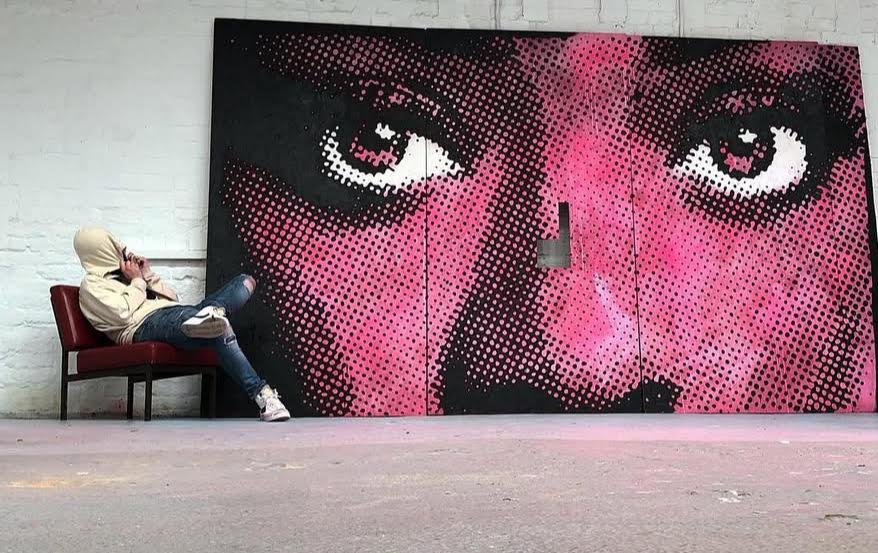
It makes art accessible to people who may not have the finances to afford expensive oil paints and a huge canvas. Just grab a handful of soil from the garden, mix it with water and paint! Rip up old clothes and collage them, finish that half empty, lumpy bottle of sauce that’s been in the back of the cupboard for years… just CREATE!
Antony, Andy Warhol was a key figure of the 60s pop art and culture scene, what do you think pop art will look like in the next century?
I think from the moment the pop art movement began, its original ideas have been regurgitated time and time again in popular culture and they always will be. Pop art never seems to loose its freshness - visually in an existing form it has become intertwined with graffiti and street art a hell of a lot and will continue to be so. Digitally, with AI and advertising it’s very accessible and visually appealing for people that wouldn’t normally recognise or appreciate art. It’s a very popular style of art for that reason, it feels like a very inclusive art form that I don’t believe will ever disappear .
“pop culture has just always been a safe haven to me”
Nathan, you’ve documented some viral moments of you presenting celebrities with their portraits, most recently a portrait of Rachel Zegler who has just concluded her stint in Evita on the West End. Which celebrity portrait is next on the cards and who would you most like to create?
This is the world we live in now right? We document things and often put them on social media. To some it may seem like showing off. Ultimately all I wish to do is make people smile. For the best part, that’s what these famous encounters and their reactions to my work do. They allow fans of these famous people to see them genuinely stumped and happy. I’d like to think being their authentic selves in a moment of fun. People have been so kind to me. Some stand out presentations have been for the likes of the Royal Family... the actual King, Spider-Man’s Tom Holland, Cyndi Lauper… I was once even invited backstage at the Royal Albert Hall to meet Mariah Carey after being commissioned to make her birthday present! Of course recently Rachel Zegler was incredible! Up next… I visit Vegas a lot, I love it there. So I have some plans up my sleeve with that… all I can say is it’s all going to be rather MAGICAL!
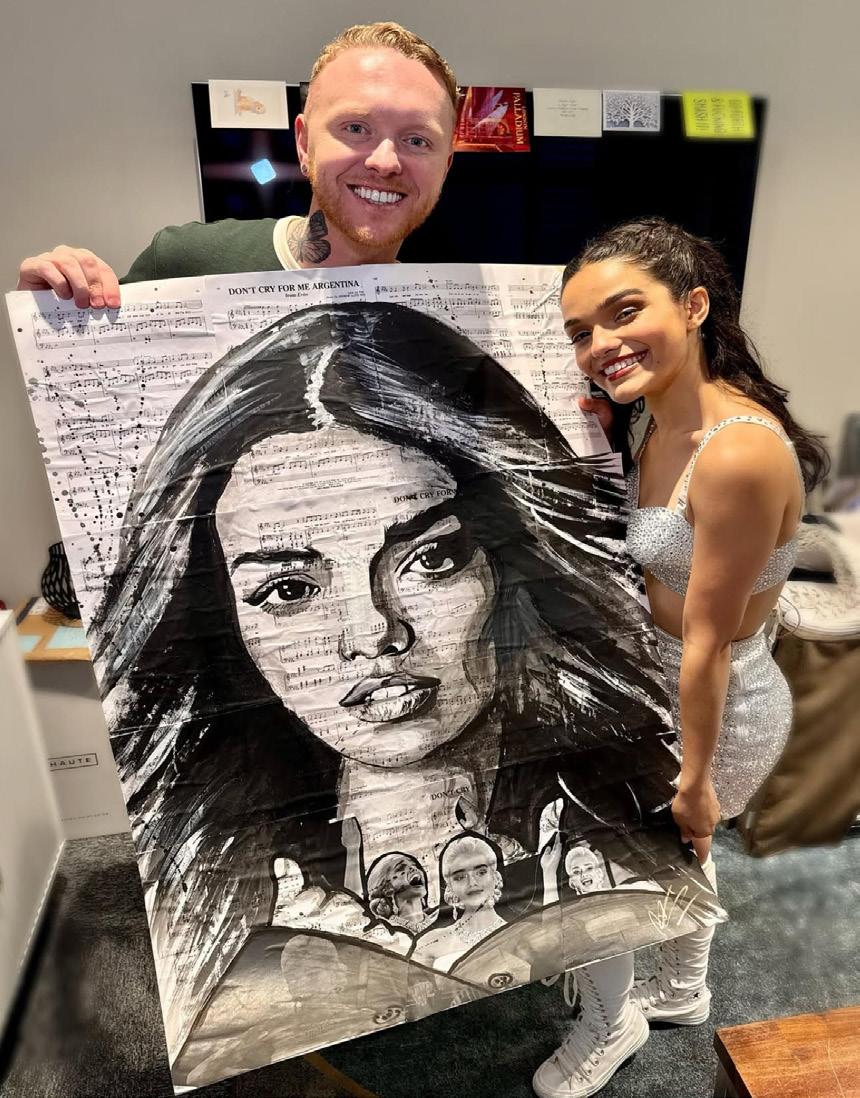
“ There are no boundaries or rights and wrongs when creating art ”
To both: Nathan I know you’re very vocal about supporting local, community-based charities and events, and Antony I know you’re incredibly passionate about supporting creative children who do not have access to art materials. How important do you think it is to support these initiatives and ultimately ensure that pop art continues to develop in Wales?
It’s important to encourage continued creativity in children. Every child draws, colours and creates. When does this stop? When they are told they aren’t good at drawing? When they stop believing in themselves? How many times have you spoke to someone who says “I can only draw stickmen’’? I tell them - there’s an artist called Stik, he is a British street artist based in London, with no formal art school training. Stik is known for painting large stick figures and he makes a living from art, painting 100ft murals all around the world. There are no boundaries or rights or wrongs when creating art. I think it’s important for the developmental freedom of young minds to realise their potential, and if art is a tool in that then it should be encouraged. No human should believe that there is something they cannot do. Some people are born artists and stand out from others, but who decides who can have a pop at it or not? Art is fun, pop art is fun, making art is fun. Who doesn’t want to have fun? Whether or not you cut the mustard or not and make a career out of it I don’t think it matters. I do regular workshops and mural painting sessions with Blaenau Gwent youth service who are doing great things to support the youth in the Welsh valleys and we are spreading the joy of creativity and opening young minds up to the possibility that you can choose your own future and being creative is an avenue you can go down to achieve that. Art is for everyone and pop art, for me, in its evolution into street art culture feels right and it excites and engages the youth. I’m from a working class family, I once picked up can of spray paint and played about with it and made a career out of it. If I can do it anyone can. -CONSUMERSMITH
I can only echo and emphasise what Antony has said. Art is so incredibly vital to us all. Whether you consciously realise it or not. Think back to the dreaded 2020 lockdown. Aside from our incredible NHS to save our bodies… we turned to the arts to save our souls. It kept us sane. We sat on our beautifully crafted sofas at home, enjoying the talents of Netflix series. We turned to picking up a paintbrush or a knitting needle to crochet for the first time in years… because we had time. Well, I say there’s always time. Stop. Think about those moments and how being a little bit creative, and also thankful to our creatives… made a huge difference. We missed events, the theatre, live music! Arts are what nourish us deep down. I come from Ebbw Vale, dreams were just that to me growing up… dreams! But I took a punt on a few wacky ideas and I ran with them. I’m still running with them 15 years later…grateful for every day I get to create for a living. I think that’s something both Antony and I can vouch for - JUST CREATE.
Words and Design by: Molly James Images courtesy of: Nathan Wyburn and Consumersmith
When I started uni, I encountered the question that all freshers face: how do you make your room feel like home? It was important for me to make my space feel personal rather than just a place I was renting for ten months. Of course, there is cliché decor, like a photo wall of friends and family I missed, but I realised that I needed to leave space for the photo booth photos I collected along the way. I included inspiring quotes, cartoons, and postcards from a previous trip to Paris, these all brightened my mood when decorating my space.
As a student who struggles with my mood in the darker months of autumn and winter, I knew that the lighting in my room would be crucial in lifting my spirits. Instead of relying on the main fluorescent light in my uni room, fairy lights and a small lamp helped to create a relaxing space for winding down after a long day as a busy student. You could also consider getting a SAD (seasonal affective disorder) lamp, which provides a significant amount of light. It’s incredible how lighting can change your perception of your environment and make your uni room pop.
Words by: Felicity Goble
I remember walking into my room at the beginning of first year and feeling so overwhelmed. It just added to the never-ending list of things that I had to sort out. How was I meant to make oversaturated, mint green walls look good? After those emotionally exhausting first weeks of uni, I realised I had the chance to create my own space. For some, their first-year room is the first space they have ever had to decorate freely!
Over time, I’ve learnt that I need photos of everyone I love to make my room my own. It’s hard to adjust to living alone without any reminders of the people and things that make you happy! As I made friends at uni, that photo wall began to expand and pop, becoming one of the things people would say they loved about my room when they came to visit. My room at home is similar, but at uni you can really see the growth I have made through my changes in decor. Now in my third year, houseplants and funky lamps are my current obsession. Through maturing at university, your room decor can change with you, and that is a wonderful thing!
Words by: Ellie Bradfield
“Starting university is a clean slate and what better way to start over than turning your uni bedroom from a blank canvas, into your own”
Starting university is a clean slate and what better way to start over than turning your uni bedroom from a blank canvas, into your own. Seeing your bedroom for the first time can feel underwhelming when you’re faced with white walls that look lifeless and somewhat institutional. But fear not, there's a perfect solution to splatter your walls with personality, all in the power of a poster.
The cheapest and easiest way to make your uni bedroom pop is to attack the walls with some of your favourite things. Film junkie? Turn to iconic Pulp Fiction or 10 Things I Hate About You posters. Pop music fanatic? Album covers from Sabrina Carpenter, Chappell Roan and Taylor Swift have got you covered!
A lot of time is spent in your uni bedroom whether it’s endless essay writing or getting ready for a night out. Trust me, nobody wants to do either in an empty box. Plus, having Heath Ledger watching you do your assignments from your wall isn’t the worst thing in the world.
With that said, you should never underestimate the power of a poster, they are quick, cost efficient and combine decoration and identity in one, helping your uni bedroom POP.
Words by: Isabelle Mundy Design by: Emily Allbutt

Mae diwylliant pop heddiw yn cael ei lywio gan TikTok, memes a reels - a’r algorithm sy’n penderfynu beth sy’n ‘popio’. Golyga hyn fod y Saesneg felly’n dominyddu llif y brif ffrwd, gan wthio’r Gymraeg i’r cyrion. Fel mae adolygiad diweddar Comisiynydd y Gymraeg yn dangos, Saesneg yw’r iaith ddigidol i 80% o bobl ifanc yng Nghymru.
Gellid dadlau, er yr ystadegau, bod lle i’r Gymraeg yng nghanol y sŵn - ymysg y memes a’r nosweithiau hwyr ar TikTok. Yr ateb?… Hansh.
Mae Hansh, platfform digidol S4C ar gyfer bobl ifanc, yn gwybod sut i greu cynnwys sy’n taro deuddeg gyda chenhedlaeth newydd o Gymry. Boed hynny’n glip sy’n cyfleu noson allan yng Nghlwb Ifor, neu bost am stereoteip y fam ‘Steddfod - mae Hansh yn profi bod modd i’r Gymraeg fod yr un mor fachog, hwyl a pherthnasol â chynnwys Saesneg.
Cefais gyfle i siarad ag Elen Evans sydd wedi bod yn creu cynnwys i Hansh dros y flwyddyn ddiwethaf. Mae ei phersonoliaeth a hiwmor cyflym eisoes wedi denu miloedd o wyliwyr…
Pam creu cynnwys yn y Gymraeg?
Mae’n llawer mwy personol i fi gysylltu ag eraill yn fy iaith gyntaf. Dw i’n teimlo’n fwy rhydd i fod yn fi fy hun.
Wyt ti’n meddwl fod Hansh yn llenwi’r bwlch ieithyddol arlein?
Mae’r rhan fwyaf yn treulio orie’ ar eu ffôn yn gwylio cynnwys Saesneg, felly mae’n change i gael rhywbeth yn y Gymraeg sy’n teimlo’n berthnasol, doniol ac yn adlewyrchu ein bywydau ni.
Hefyd, mae’n help mawr i ddysgwyr, mae’n nhw’n gallu clywed yr iaith mewn ffordd ysgafn a hwyliog, sy’n gwneud iddyn nhw deimlo’n fwy cartrefol.
Ydi Hansh yn newid perthynas pobl ifanc â’r iaith?
Ydy - mae Hansh wedi creu ‘look’ hollol newydd i’r iaith, gyda chynnwys ffres sy’n gwneud y Gymraeg yn llawer mwy hawdd i’w gwylio a chysylltu gyda. Mae’n teimlo fel bod mwy a mwy o bobl ifanc yn cymryd y Gymraeg ymlaen, achos mae’r cynnwys yn hwyl ac felly mae dysgu’r iaith yn fwy o hwyl hefyd!
Geiriau gan: Lili Ray
Eich barn chi…
Sut mae pobl ifanc yn gweld Hansh a’r Gymraeg ar-lein?
Dyma farn dau sy’n gwylio:
Trwbwl dda
O ran diwylliant pop Cymraeg, mae Hansh yn sgorio bob tro i mi. Mae cynnwys Hansh yn dod lan yn aml i mi ar lwyfannau cymdeithasol ac mae hynny’n ffordd hawdd o gyrraedd pobl ifanc yn yr oes ddigidol.
Mae’r opsiynau gwylio yn ddigywilydd, yn gwthio ffiniau ac yn ysgogi’r meddwl, sy’n helpu a herio cynulleidfa ifanc. Mae’r brand yn parhau i ymestyn ei gorwelion a rhoi llais i bobl ifanc, trwy gyfresi dogfen fel GRID, Pen Petrol a dramâu byrion fel Merched Parchus.
Er nad yw’n blatfform sy’n anelu’n ormodol at ddysgwyr Cymraeg, mae llawer o’u cynnwys wedi’i isdeitlo, sy’n cael ei werthfawrogi ymhlith dysgwyr. Mae Hansh yn cynnig straeon trawiadol a chomedi clyfar; un o fy hoff gymeriadau yw Gareth yr Orangutan. Amcan Hansh yw creu “trwbwl dda” ac mae’n trwbwl dda yn wir.
Geiriau gan: Gabrielle Treharne-Hughes
Cynnwys Cymraeg i Bawb
Mae angen i’r Gymraeg fod yn amlwg ym mhob man ac i bawb deimlo fod ganddyn nhw fynediad at y Gymraeg. Does dim amheuaeth bod Hansh yn llwyddo i ddenu cynulleidfaoedd newydd a ffres i blatfform Cymraeg ei hiaith. Mae eu cynnwys arloesgar yn dilyn trends ac felly’n rhoi cyfle i bobl ifanc deimlo fel bod lle i’r Gymraeg yn y byd modern. Gydag ieithwedd ysgafn, hawdd i’w ddeall, mae’n addas ar gyfer pobl sydd llai hyderus gyda’r Gymraeg, yn siaradwyr rhugl, yn siaradwyr newydd, neu i bobl sydd â diddordeb yn y Gymraeg.
O fideos bywiog am ddechrau yn y brifysgol, creu memes am MaesB a Thafwyl i’r dwys fel profiadau pobl ifanc o fewn y gymuned LGBTQ+ neu rhoi sylw i bobl ifanc sydd wedi wynebu tostrwydd, mae Hansh yn creu cynnwys pwysig, a hynny i gyd yn Gymraeg. Maen nhw’n rhoi platfform a llais i bobl ifanc Cymru heddiw gan sicrhau bod y Gymraeg yn weledol ac yn agored i bawb, beth bynnag eu cefndir.
Geiriau gan: Myfanwy Lewis
Mae Griff Lynch ar drothwy cyfnod newydd yn ei yrfa. Ers blwyddyn, mae cyn-aelod Yr Ods bellach yn cerdded ei lwybr ei hun fel artist unigol, gan arbrofi gyda sain pop electronig ffres.
Yn ystod sgwrs gyda Griff, soniodd bod y broses o recordio ar ben ei hun wedi bod yn heriol. “Ma’n lot anoddach, does gen ti ddim pedwar person sydd yr un mor invested yn y caneuon a chdi, achos dy brosiect dy hun ydy o. Mewn band mae pawb yn gyfartal a ti’n medru rhannu llwyth gwaith.”
Er dweud hynny, mae recordio cerddoriaeth ar ben ei hun wedi dod yn sgil naturiol i Griff. O’r synths i’r offerynnau analog amrywiol, mae’n gyfrifol am bob elfen o’r broses recordio, ac mae hynny’n rhywbeth pwysig iddo wrth greu sain unigryw ar record. Mae’n cydnabod hefyd nad yw pop electroneg bob amser yn gweithio mewn cyngherddau traddodiadol, ac felly mae’n addasu’r sŵn i weddu i’r lleoliad.
Roedd y syniad o sain sy’n newid o’r stiwdio i’r llwyfan yn rhan o’r atyniad. “Mae pop electroneg yn derm eithaf eang”, meddai Griff, “a ni’n cymysgu lot o synau gitâr ac indie hefyd. Mae o’n dy demtio i wneud cerddoriaeth i ddawnsio, lle ti’n medru chwarae hefo’r beats a synau gwahanol. Os wyt ti’n creu stwff mwy acwstig neu werinol maen nhw’n dueddol o swnio’r run peth yn fyw ac ar record. Mae ‘na lot fwy o chwarae hefo pop electroneg”.
Er bod Griff yn creu cerddoriaeth trwy gyfrwng y Gymraeg yn bennaf, mae ei weledigaeth gerddorol yn un sy’n ymestyn ymhell y tu hwnt i ffiniau Cymru. Mae ei waith yn adleisio dylanwadau o’r sîn gerddoriaeth electronig a pop byd-eang, gan ddod ag elfen ryngwladol i sŵn sy’n sy’n ddwfn Gymreig ei wraidd. Ymhlith yr enwau sydd wedi gadael y dylanwad mwyaf arno mae’r grŵp o Efrog Newydd, LCD Soundsystem, a gafodd y cyfle i’w gweld yn fyw yno’r llynedd.
Yn ei eiriau ei hun, mae’r cyfuniad yma’n “od mewn ffordd, gan fod dy glust wedi arfer clywed geiriau Saesneg a dyna sy’n boblogaidd ledled y byd. Ond y sialens i unrhyw artist iaith Gymraeg yw peidio copïo’r sŵn byd-eang a trio gwneud fersiwn Gymraeg ohono fo. [Yn hytrach], ceisio gwneud rhywbeth unigryw sy’n ffitio hefo’r iaith.”
Pan ofynnwyd sut mae’n gweld pop electronig Cymraeg yn datblygu dros y blynyddoedd nesaf, roedd gan Griff weledigaeth glir a gobeithiol: “Mae’n allweddol bod cerddoriaeth Cymraeg yn cael ei gyflwyno i gymunedau Cymraeg ac i bobl sy’n siarad yr iaith. Ond mae hefyd yn bwysig i gerddoriaeth Gymraeg gyrraedd y siartiau, fel mae grwpiau fel Adwaith wedi gwneud, ac i gyrraedd y radio genedlaethol tu hwnt i Gymru. Sa fo’n grêt gweld stwff Cymraeg ag apêl fwy byd-eang.”
Wrth drafod y broses greadigol o ryddhau ei sengl ddiweddaraf, ‘Cyntaf i’r Felin’, eglura Griff mai’r nod pennaf oedd codi ymwybyddiaeth o’r albwm newydd sydd ar y gweill. Er bod rhyddhau cân newydd yn gyffrous, mae’n sôn bod cyfryngau digidol cyflym wedi newid y ffordd mae cerddoriaeth yn cael ei dderbyn. “Ma’ bob dim mor instant”, meddai, gan gyfeirio at fesuriadau fel likes a gwrandawiadau Spotify, “sydd ddim yn beth iach i artist, ti’n dechra’ gorfeddwl pa mor dda yw dy gân”, meddai.
Er gwaethaf yr holl waith sydd wedi mynd i greu’r albwm, mae Griff yn gweld y cam nesaf fel un agored ac arbrofol. “Unwaith dw i wedi cael yr albwm yma allan o’r ffordd, ga’i weld dros y flwyddyn nesaf be oedd yr ymateb. Os bydd ‘na ddyhead am fwy, ma’n siŵr sŵn i’n licio datblygu ar ben hwn hefo sŵn ffres. Allai ddim dweud i ba gyfeiriad, achos dwi’n newid o flwyddyn i flwyddyn ar beth dwi’n gwrando arno.”
Gyda’r albwm newydd Blas Melysa’r Mis wedi’i ryddhau’n ddiweddar, a’i senglau diweddaraf eisoes yn rhoi blas ar y cyfeiriad newydd, mae’n glir bod Griff Lynch dal i wthio ffiniau’r sain Gymraeg. Ond fel mae’n awgrymu ei hun, does dim gwybod i ba gyfeiriad y bydd y gerddoriaeth yn mynd nesaf, pop, electro, neu rywbeth hollol annisgwyl. Cadwch lygad allan ar y gofod hwn.
Geiriau gan: Erin Davies
Dylunwyd gan: Charlotte Hardie-Watts

2025 has undoubtedly been the summer of a Britpop resurgence.
It’s been roughly 30 years since the British media coined the term Britpop to describe the alternative indie-rock scene emerging in 1990s England as both a musical and cultural reaction against the American grunge scene that dominated the music scene. The movement completely took over, becoming synonymous with the ‘Cool Britannia’ era, which defined a period of celebration of British culture. Here, we saw the emergence of young British talent, with the likes of Pulp, Blur, Oasis, and The Verve, beginning to gain recognition on a global scale.
Despite its marketability, Britpop is rooted in working-class identity. Oasis’ Gallagher brothers, Liam and Noel, grew up on a council estate in Manchester and have always worn their upbringing as a badge of pride. When I discovered Oasis’ music during my early teens, I immediately became obsessed with both their sound and attitude. As someone from a working-class background, discovering the band was one of the first times I had felt represented in music, a feeling I’m sure many Brits felt back in the 90s. The international success of these working-class bands was proof that you didn’t need wealth, nepotism, or privilege to become successful. For me, that is deeply inspiring.
The announcement of the Oasis Live ’25 reunion Tour last summer certainly lit the match that sparked the Britpop spirit again. When I first began listening to Oasis, I recall feeling disappointed at the thought that I would never get to experience attending one of their concerts. For me, Oasis embodied a nostalgia for a time I hadn’t even lived through. This is why the Live ’25 announcement felt so significant; it offered the rare chance to finally connect with something I’d only ever experienced second-hand, a feeling I’m sure many other Gen-Z Oasis fans can relate to. My mother, on the other hand, was finally granted an opportunity to experience her favourite childhood band live for the first time. It’s fascinating how one tour can mean two completely different things to different generations, yet still carry the same emotional weight.
It seems Britpop is finally back. Pulp released a new album titled ‘More’ in June, Robbie Williams has announced both an album and tour titled ‘Britpop’, and Richard Ashcroft is touring in 2026. Not only this, but Britpop fashion has made its return.
Attending the Oasis reunion concert in Wembley this summer was a special experience.
Watching London become plastered with the Oasis logo felt like a reminder of how much Britpop still resonates across generations. Not only was I able to experience hearing one of the biggest bands in the world live, but I also got to hear Richard Ashcroft open the concert. Being able to hear my favourite songs Bitter Sweet Symphony, Supersonic and The Drugs Don’t Work performed live was unforgettable. I’m an individual who’s always been fascinated by the past, and I often find myself wishing I could have experienced the 90s first-hand. Attending the Oasis concert felt like the closest I’ll ever get to experiencing that era.
With the cost-of-living crisis impacting UK households harder than ever, it is undeniable that the resurgence of Britpop feels fitting in a time of economic uncertainty. There’s something resonant about the return of a genre born out of defiance and a working-class identity. Most Brits are currently facing rising rents, stagnant wages, and younger generations are provided with fewer opportunities. Britpop’s emphasis on self-belief and rebellion is an attitude that feels relevant again.
However, I can’t help but criticise the way this revival is playing out in terms of fashion. The 90s Britpop style was characterised by parkas, Adidas Sambas, polos and baggy jeans, accessible and affordable clothing made iconic by the individuals who wore it. This summer, my social media feeds have flooded with Britpop and ‘Lad-core’ aesthetics coming back into play. Today, while the aesthetic has returned, the price point has not. The same items are now part of a commodified look that often comes with a price tag that is unachievable for the ordinary person. It appears that what was once an authentic expression of working-class culture now feels far removed from its original context
This issue persists with each trend revival. Despite being able to copy the aesthetics, the original feeling isn’t there. Although, in my opinion, Britpop does appear to be an exception to this. The significance of Britpop lies in its emphasis on ordinary, working-class individuals being able to achieve whatever they put their minds to. 2025 has been defined by economic hardship and social division in the UK, both issues I have experienced firsthand. Personally, I believe the resurgence of Britpop and the attitude synonymous with the movement is exactly what was needed this summer to unify the British working class.
Words by: Maya Jacob Design by: Thandi Nia Carklin
Growing up in the late 2000s, there were a few snacks that were essential to my childhood. Without them, my life might have been just a little less colourful and sweet.
The snacks my mum would pack for school were always the yucky, healthy kind. Raisins, to me, seemed like hundreds of little flies oozing dark brown juice, all stuck together and then tightly packed into that iconic, bright red box. It was as though the neat packaging was designed purposely to deceive parents by hiding the sticky mess inside. And it worked; as I can’t recall ever seeing my mum eating any, despite it being a staple for me and my brother.
In school, I envied the kids who were allowed to bring real treats, but offering to trade raisins for candy was a long shot. Instead, I spent countless playtimes weaving pastelcoloured Loom Band bracelets in return for a small handful of extra-cheesy Goldfish or a single Oreo. On the playground, Ring Pops were both a crown jewel and a curse: deliciously sweet, but wearing one came with the embarrassing declaration of playground ‘love’. The sugar rush was worth it, even if it meant enduring the horror of going near a boy.
Coming home from school became the most exciting part of my day. Not only because I could escape the dull, pale walls of my purgatory, but more so because I could finally eat whatever snacks I wanted! Arriving home on the school bus before my mum, throwing my things on the couch and sprinting downstairs to the corner shop with my friends gave me the chance to indulge in more of those alarmingly neoncoloured sweets that defined the 2000s.
I remember the feeling distinctly: fishing through the tight pockets of my dark blue skinny jeans to carefully pull out the crumpled paper notes and heavy coins before sliding them across the counter. The sound of the cash drawer’s pop, followed by the cha-ching, was the soundtrack to our childlike freedom. It marked a small but thrilling kind of independence, one that loosened the reins of a parent’s raised eyebrow or the dreaded word ‘no’— even if only for a few, precious hours.
Popping candy and a can of pop were always my go-to from the corner shop. I’d tear open the vibrant pink packet and tip the crystals onto my tongue before chasing them with a gulp of soda. Instantly, hundreds of tiny neon rocks were biting me back, snapping louder and angrier with every flood of soda. We’d stick out our tongues to show off the chaos, watch the beads ricochet like firecrackers and compare whose soldiers jumped higher and whose tongue had been stained redder from the battle.
But the joy of sharing snacks wasn’t limited to playground trades and after-school shenanigans. Every Friday, my mum would bring home a few Fruit Roll-Ups (always strawberry) and a packet of microwave popcorn from the American candy store, a treat reserved just for the weekend. To me, this meant everything. It was a luxury my pocketful of coins could never buy and a comfort no one else could provide. It meant no raisins, no raised eyebrows — just sugar highs, warm snuggles and the promise of family movie nights. Sliding a Shrek DVD into the chunky player and hitting pause gave us just enough time to climb onto the kitchen countertop, sit in the dark and watch as the kernels popped, one by one, our own little sacred ritual.
Looking back, what made these snacks so special wasn’t the taste but the shared experience. Every kid knew the joy of trading sweets under the table and of comparing who had the biggest Hubba Bubba bubble. These weren’t just snacks; they were the social glue of growing up in the 2000s. Now, as a so-called adult, I rarely eat them. The idea of starting my day with a Pop-Tart or downing popping candy with cola makes my heart race. But the sight, or occasional bite, of a fluorescent sugary treat still sends me straight back.
Food has that power, it isn’t just sustenance - it’s culture, it’s memory, it’s a time machine. One bite can transport you back, replaying the colours, the laughter of friends, the warmth of a parent’s embrace and the innocence of childhood. That’s the real magic of those 2000s snacks. Although they’ve outlived their flavours and shiny allure, the ties remain. It’s a taste that isn’t just sweet, but unforgettable.
Words by: Eiriana Zhou
Design by: Molly James
Are you a university student, and find yourself tight on time? Or are you a fresher and can’t find a minute to pop to the shops, let alone cook a meal? If so don’t sweat, we’ve got you covered with a plethora of microwave snacks and meals to keep you sustained and satiated when you’re racing the clock.
Thoroughly wash and pat dry potato, pierce potato with a fork (5-6 times). Place potato on a microwave safe plate and microwave for 7 minutes, turning halfway through. Ensure the potato is fork-tender and then top with your favourite toppings. Tuna mayo and sweetcorn, baked beans and cheese, the list goes on. Jacket potatoes are high in potassium and a good source of vitamin C and B, as well as low in fat and sodium, acting as an affordable versatile meal option.
Put 40g (or however much you like) of oats into a microwave safe bowl, pour in around 180ml of milk or water (depending on how thick or liquidy you like your oats). Add a pinch of salt and microwave your oats for 2 minutes, let it stand and mix, then microwave for longer if desired or top with your favourite’s. Fresh berries and yoghurt for antioxidants and probiotics. Banana and peanut butter for a healthy source of protein and fats.
Place popcorn kernels in a lidded, microwaveable pot and cover with a lid. Microwave on high until popping sounds stop (usually around 1-3 minutes). Cover popcorn with butter, honey, salt or other favourite toppings. Popcorn is a good source of fiber and can be low in calories, salt and sugar depending on how you top it.
Add 4 tbsp of self-raising flour, 4 tbsp of caster sugar and 2 tbsp of cocoa powder into the largest mug you have (trying to not overfill the mug). Add one egg and mix with a fork until all ingredients are incorporated. Add 3 tbsp milk, 3 tbsp of vegetable oil and a few drops of vanilla essence and mix until smooth. Add chocolate chips if you want. Place the mug in the middle of the microwave and microwave on high for 1 ½ minutes. Let the cake stand and top with icing or cream or any other toppings.
Words by: Daisy Greenway
Design by: Emily Allbutt
The rise of social media, particularly TikTok, has undoubtedly reshaped the book industry. From the overnight sensation A Court of Thorns and Roses to the viral hit It Ends With Us, authors are increasingly turning to pop fiction: books that are characterised by easy-to-read storylines, action-driven narratives, and an adherence to familiar genres such as romance, mystery, and fantasy. While pop fiction often acts as a lifeline for struggling authors and a gateway for new readers, it relies heavily on mass production to reach a large audience. As for the books produced under pop fiction, these usually lack literary depth and originality, thus becoming “easy reads” written for escapism rather than self-reflection and an understanding of societal issues. Pop fiction and the shift towards ‘easy reads’ is not always negative. Pop fiction has given birth to BookTok, a vibrant online community of readers who create and share videos about books, including reviews, recommendations, and discussions of books. BookTok has turned reading into a trend, which has significantly increased book sales and sparked a new interest in reading, particularly amongst younger generations. This community has even led to ‘As Seen on BookTok’ signs appearing on the front cover of books and in sections at mainstream bookstores, such as Waterstones. Furthermore, with books that are labelled ‘easy reads’, pop fiction can be read by anyone, acting as a cheap and accessible form of entertainment. In this way, pop fiction promotes the idea of reading for escapism, whilst also allowing readers to indulge in some of the benefits offered by literary fiction, such as experiencing different perspectives. Yet, the cost of ‘easy reads’ means that the quality of literature produced under pop fiction is jeopardised for the sake of fast releases. BookTok has placed authors under increasing pressure to release another book onto an already sizable series, or to release a new series with the hopes that this, too, might become an overnight success. This practice of fast releases has caused authors to often abandon the careful editing, originality, and narrative complexity that they are so used to. What we see instead are stories which are designed to go viral and not to last.
Thus, many authors have succumbed to a “formulaic” approach towards writing their books, creating characters that lack depth and returning to the same recycled storylines. To overcome this lack of originality and gain the attention of readers, some authors have been accused of glamorising certain ‘shocking’ topics in their books, as well as . For instance, famous BookTok author Ali Hazelwood’s recent novel, Problematic Summer romance, features a 15-year age gap between the main characters, a dynamic that some readers found unsettling and poorly executed. Furthermore, Taylor Jenkins Reid, author of Daisy Jones and the Six, has been criticised for deliberately using Latin-American characters as plot d vices rather than emotionally complex characters, in an attempt to fulfil the growing need for racially diverse representation within literature. Aside from producing lower quality literature, pop fiction has also turned reading into a trend, rather than something to be cherished. In the shallow world of pop fiction, being a reader has become more important than actually reading. Entering the world of pop fiction is like experiencing a reality where people confess to owning hundreds of unread books and overcrowd their margins with sticky tabs and annotations for books that do not require much intellect, all for the sake of being perceived as a “bookworm”. As a result, reading has become a lifestyle or an aesthetic, instead of something done sincerely. The problem is that, like all trends, pop fiction will eventually die down when people lose interest. For the book industry, who have come to rely on the sales of pop fiction greatly, the decline of this genre would be detrimental. Ultimately, when books are treated like trends designed for quick consumption and replacement, the profound impact of literature is lost.
Words by: Soanna Khan
Design by: Huda Malik
‘Don’t judge a book by its cover’. Admittedly, I do, as I’m sure most of you do too – it’s okay, this is a safe space. A good cover doesn’t just invite us, it hints at deeper meanings and rewards us later when narrative symbols suddenly come together. Think of the looming statue of an enigmatic satyr on Susanna Clarke’s Piranesi – a subtle foreshadowing. Or the symbolic shape of the cornucopia on the latest Hunger Games book, paired perfectly with the bird and snake emblem on The Ballad of Songbirds and Snakes. These symbols transform the experience once the story unfolds. Disappointingly, for every cover that pops, many flop. Movie editions, for example. Nothing screams ‘cash grab’ like plastering famous faces across a fictitious novel. The joy in fiction is the line blurred between escapism and imagination: real-life faces prevent us from conjuring our own visions.
Another pet peeve is fake stickers: the false stamps permanently scar a design. Isn’t the whole point of stickers choosing where you want them? Stamping one upon a carefully designed cover, unremovable, hurts my bookish soul. My favourite covers all share one niche artistic feature. Circe’s hardcover, Piranesi and Jennifer Saint’s myth retellings all gleam with textured foiling. The risen feel of the dust jacket screams luxury. Imagine my delight when both Piranesi and Circe have golden foil on the actual book cloth beneath the dust jacket. Adorned with gold pillars and intricate designs that are beautiful on the outside as well as underneath.
Words by: Sam Davies

The memoir Educated has a front cover of a pencil, which didn’t initially pique my interest or inspire excitement when it was recommended to me in high school. Another boring memoir, I thought. However, Tara Westover’s story of self-discovery through educating herself in rural Idaho, despite her radical survivalist Mormon parents forbidding it, is a story that has never left me.
The simplicity of the pencil on the front cover represents the transformative nature of basic education and how Tara was able to bounce back despite everything in her upbringing working to break her. Inside the pencil, we see a figure standing on top of a mountain with birds flying overhead. The pencil doesn’t only stand for education, but in Tara’s case, the freedom to tell her story and her truth about growing up in an abusive Mormon household. With her growing education, Tara made hard decisions regarding her religion, beliefs and her relationship with her family. She grew up being taught that herbs could heal any illness and stockpiling canned food, but is now a Cambridge alumnus with a PhD. Education is power and a privilege, and Tara’s story taught me to relish my access to information.
Words by: Jess Fotheringham
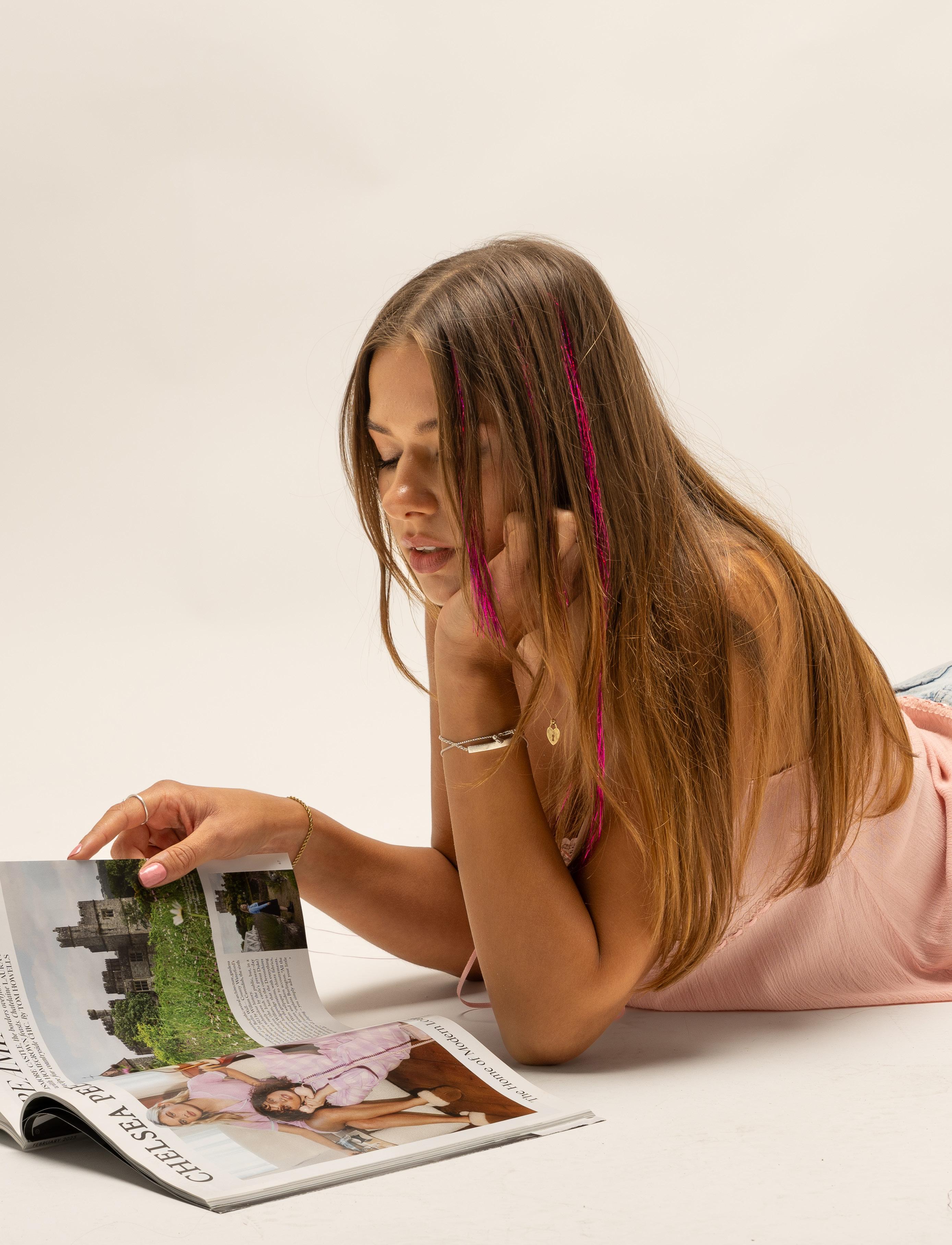
A victim of the power of ‘Book Tok’, a couple of years ago I finally read a book purely for its iconic front cover – and I wouldn’t do it again.
With Portrait of A Young Woman in White by Jacques-Louis David on the front, TikTok adopted My Year of Rest and Relaxation by Ottessa Moshfegh as an aesthetic prop whose presence almost guaranteed a video’s virality. Expecting its contents to live up to the hype of the cover, I was sorely disappointed with the absence of any substance inside. Exploring pre and post 9/11 New York alongside themes of addiction, depression and eating disorders only to blur out the nipple in David’s original portrait feels hollow to me.
For a book overflowing with complex characters, it possessed a performative façade that left me feeling uninspired without any impact. I can appreciate the political undercurrent of how America changed post 9/11 as well as the questioning of what makes a fulfilling life. However the lack of repercussions and rewards for the narrator’s actions and decisions leaves this book meaningless – even the faux epiphany is a hoax with no real awakening. It is a complete juxtaposition to David’s portrait that symbolises a transformation of repose into revelation.
Perhaps this was Moshfegh’s intention, to divide readers and spark debate, and if it was I think she succeeded with flying colours.
Words by: Ellie Evans
Design by: Jemima Lake & Thandi Nia Carklin


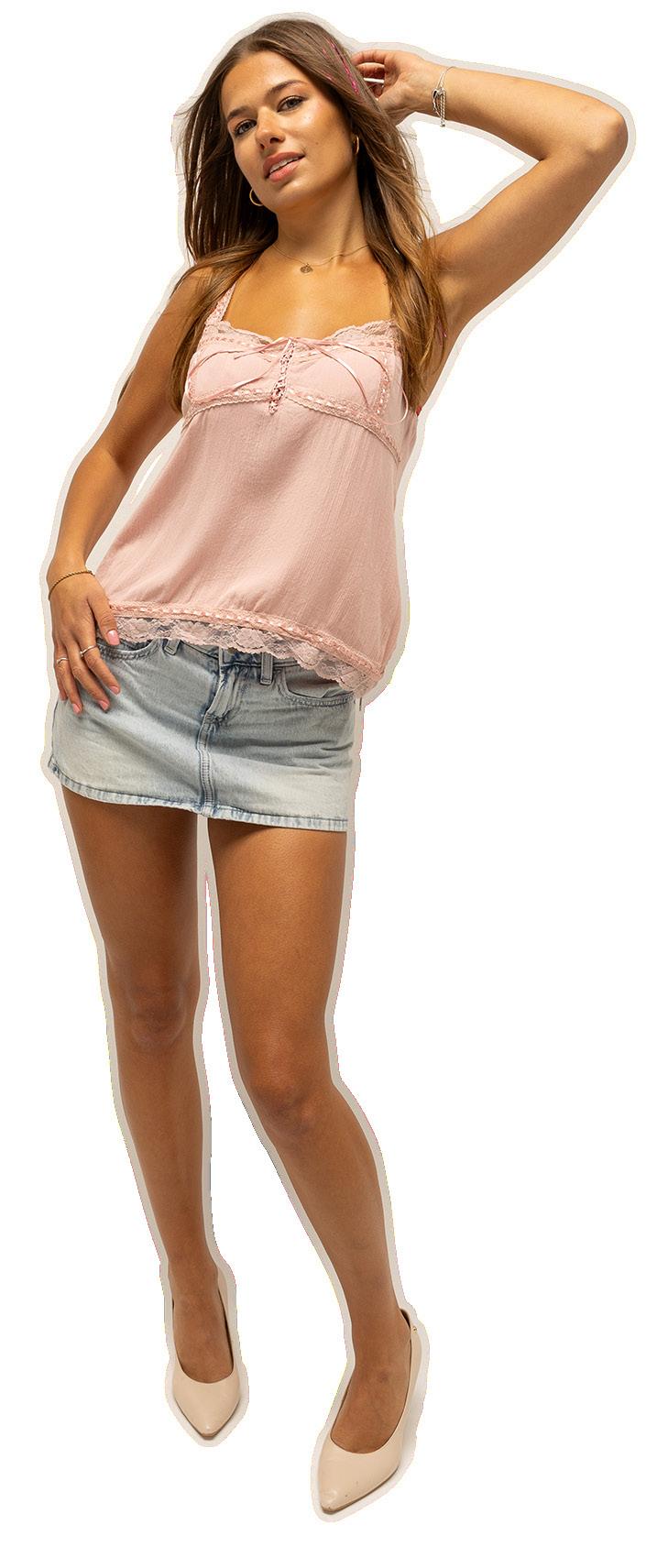
They say what goes around comes around, and in fashion this has always been the case. Decades like the 1990s and 2000s birthed new youth cultures and music, the fashion had clearly been taken from the 1960s and 1970s and paid homage to the old British Invasion, as the new Britpop emerged. From miniskirts to flares, it’s clear that the ‘90s drew inspiration from the ‘60s, and we in turn, draw inspiration from them all.
However, the question remains: what is our obses sion with past trends, and why can’t we seem to say goodbye?
Through TikTok and Instagram, we see influencers reimagining past decades in the new digital age through fashion and seemingly forgetting all the negative beauty standards that came with it. For example, low-rise jeans and the spike in popu larity they’ve had in replacing high-waisted jeans. Since their resurfacing, low-rise jeans have been the source of polarising opinions; some argue they promote unhealthy body image expectations, and if we look back to the early 2000s and heroine chic, this is clear. However, many others think they are a staple piece and a more comfortable alternative than high-waisted jeans.
But what is the real reason behind why we can’t quit the ‘90s and early 2000s? Is it that people enjoy promoting an unhealthy body image? Perhaps. I think the answer is cultural comfort.
Gen Z (including myself) looks back at the ‘90s (the good, the bad, and the ugly) and still sees a simpler time. A time of youth-orientated culture and technology’s birth. Call it post modernism, but I like to say that pop culture’s obsession with the past is purely a form of hypernostalgia, and a homage to simpler, freer times.
The ‘70s, in terms of self-expression, creativity, and fashion, in my opinion, is the best decade. From glam to punk, the ‘70s had it all, but in terms of trends that just won’t quit, we must thank the one and only David Bowie. Ahead of his time in both music and fashion, Bowie blurred gender lines in the ‘60s when he wore dresses onstage. His androgynous look resonates perfectly with modern identity. We now see artists, like Chappell Roan and her new romantic style makeup, and many believe that this look came from her alone. You must always look to the past! Her makeup and a great deal of her ‘look’ clearly resembles Bowie’s Ziggy Stardust era.


“Has everything already been done?”
I truly do believe that the ‘glam rock’ look will never die. Glitter eye makeup is still a huge thing- people cover themsleves in it for festi vals. Flares and platform boots are now a staple look for the TikTok ‘office siren’ aesthetic. The spirit of self-expression from the 1970s is not just a trend but a fashion and way of life that will never die.
Trends used to be a brand new way to wear clothes or a com pletely new garment. However, what we see now is a much shorter trend cycle which constantly repeats itself. The question again is: why is this? Why does fashion only move forward by looking back? For this, I like to think of the example of the re surgence of Adidas over the past couple of years, specifically, the Samba and Gazelle trainers. These staples of the Britpop age of the ‘90s, commonly associated with the Gallagher brothers, have spiked in popularity. They have also been updated to reflect patterns and colours which are more popular today – notably, the leopard print Gazelles. I can’t help but think that the cyclical nature of these shoes, and the ways that they’ve been elevated by Gen Z, is because we embrace second-hand clothes and thrifting, which leads to the inevitable comeback of trends from long ago.
Thrifting culture paired with digital culture and ‘Tik Tok fashion girlies’ causes hypernostalgia. This means seeking comfort in an idealised version of the past, something I’ve already mentioned when looking at the ‘70s, ‘90s, and early 2000s; this inevitably fuels a constant resurrection of past trends.
So, while brands make new clothes, fash ion houses create new collections, I still can’t help but wonder if we are really moving forward. If everything we are buying is a vintage piece or a tribute to a decade, ‘scene’, or person, what does this mean for fashion in the fu ture if no one can think of anything brand new? Has everything al ready been done?
Words by: Mia Samson
Design by: Adriana Coulter

If you’ve been scrolling TikTok or Instagram recently, you may have noticed a growing trend: colour analysis. From fashion influencers to beauty bloggers, everyone seems to be discovering the shades that make them truly pop. But what exactly is colour analysis and why has it become such a talking point? At its simplest, colour analysis is about understanding which hues complement your natural features – your skin tone, eye colour and hair. It is a handy guide for clothing, accessories, jewellery and even makeup. Think of it as a bespoke palette that lifts your look without effort, making you feel polished and put together without actually trying. The most familiar system divides people into four “seasons”, each with a palette designed to bring out the best in your natural colouring:
Spring: Warm, light and bright colours such as coral, peach and gentle pastels
Celebrities: Emma Stone, Blake Lively, Reese Witherspoon
Summer: Soft, muted shades with cool undertones, including dusty pinks, lavender and soft blues
Celebrities: Emily Blunt, Kristen Stewart, Gwyneth Paltrow
Autumn: Deep, earthy tones such as burnt orange, olive green and rich browns
Celebrities: Jessica Chastain, Jennifer Lopez, Adele
Winter: Cool, high contrast colours like jewel tones, black and icy shades
Celebrities: Lucy Liu, Kim Kardashian, Janelle Monáe
A simple way to start is by observing your skin’s undertone – warm, cool or neutral – and the contrast between your hair and eyes. Light features with softness? You might be a summer. Dark hair with fair skin and bright eyes? Winter could be your calling card. Colour analysis does not stop at clothing. Accessories and jewellery can make or break an outfit. Are you a gold or silver person? Traditionally, warm-toned individuals glow in gold, cool-toned ones shine in silver. But don’t feel boxed in – mixing metals can be unexpectedly chic if it feels right. Makeup is another playground for colour analysis. Blonde hair? Brown mascara can feel softer than black. Eye colour can be enhanced with unconventional mascara or eyeliner shades. Even lipsticks and blushes can harmonise with your undertones, creating a naturally polished finish.
TikTok and Instagram have turned colour analysis into something playful and highly shareable. Influencers like @thecolouranalysisqueen are showing audiences how to curate wardrobes, experiment with makeup and even organise accessories according to their palette. It’s less about rigid rules and more about making fashion personal, mindful and even sustainable. Knowing your colours means buying less on impulse and curating a wardrobe you will actually wear. That said, the four season system is not perfect. It is largely eurocentric and does not reflect the full spectrum of skin tones. Many of us do not fit neatly into a single category, which makes the ‘wear this, not that’ advice frustrating. A more flexible approach to colour analysis focuses on contrast levels rather than rigid seasonal categories. This method, popularised by French makeup artist Alieenor (@alieenor on TikTok), considers the relative values of your features. Are your hair, skin and eyes all similar in depth? Or do they have strong contrasts that make each feature stand out? Understanding this can make choosing colours far more intuitive. High contrast individuals, for example, tend to look striking in bold, dramatic shades because their natural features already have a strong distinction. Low contrast individuals, on the other hand, often benefit from softer, more harmonious tones that complement their subtle, blended features. By identifying where you fall on this spectrum, you gain much more freedom than simply following the four-season system. Colour analysis is not about rules, it is about exploration. It helps you understand your natural colouring and shows you which shades bring out your best features rather than dictating what you must or must not wear. Whether curating your wardrobe, choosing a lipstick or experimenting with jewellery, it can be a joyful way to express yourself and boost your confidence. Start small, try different tones against your skin and notice which colours make you feel vibrant. Ultimately, the right palette does more than make you look polished – it makes you feel completely yourself.
Words by: Olivia Griffin
Design by: Huda Malik
Anyone fancy grabbing the new Dubai chocolate 24k gold Matcha Labubu Crumbl Cookie? It sounds absurd, but that’s exactly how trend culture works.
Trends gain momentum for a couple of reasons: they are new and exciting and they can provide you with a sense of belonging. This links directly to the fear of missing out (FOMO). As a student, FOMO is a struggle we probably all have, and trend-following plays a major role in shaping our behaviour. By exploring how pop-up products and hotspots have gained popularity, we see how trends are evolving into a 21st century business and marketing strategy through social media, used by celebrities and influencers to promote products and artificially start trends.
Have you ever been influenced by TikTok to buy a viral product?
The rise of TikTok in recent years has become a catalyst for trend culture, transforming how we discover, consume and engage with what is trendy. The platform makes trends easier to access than ever before and with our attention spans now shorter than ever, we chase the next big craze as soon as the rush from the last one fades. It’s no wonder TikTok feels appealing to our easily distracted brains.
A real-world example of TikTok-driven popularity is the rise of aesthetic culture. One standout of this in particular being the idea of ‘clean girl aesthetic’ which first appeared on TikTok at the beginning of 2022 and evolved over the past few months from a beauty trend into a full-blown lifestyle. The aesthetic emphasises dewy skin, slickedback hair and natural make-up and has been popularised by influencers and celebrities like Hailey Bieber. It inspires users to recreate their own versions of the ‘clean girl aesthetic’, resulting in over half a million TikToks under the hashtag.
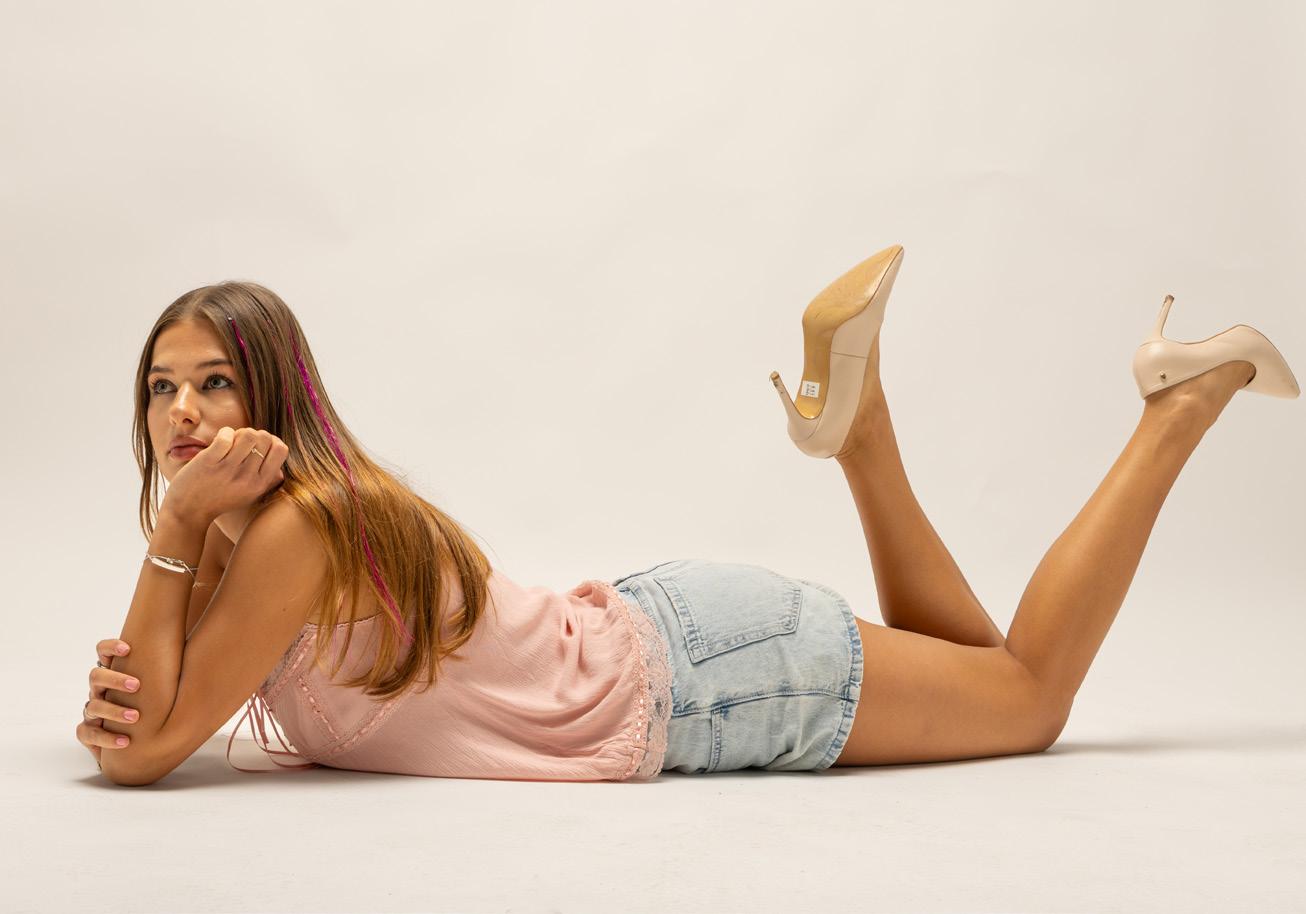
The app creates a sense of urgency and social pressure by promoting trends and challenges that encourage people to engage and collab with others, feeding a cycle of both FOMO and overconsumption. The trend ‘#TikTok made me buy it’ is a clear example of TikTok using its platform to promote consumer trend culture, with content creators now jumping on the bandwagon by uploading video reviews that lead to a snowball effect in sales. Recently, ‘#TikTok made me buy it’ has reached more than 70 billion views, and 92% of global users buy the product after watching a video on the platform. People want to become part of the platform’s cultural moments, which is why this works so well. TikTok has essentially become a search engine for our generation. Why Google it when you can TikTok it? It’s the first place we turn to discover what’s trending.
Trends like this have increasingly become part of a carefully planned marketing strategy. Brands now pay celebrities and influencers, like Hailey Bieber, to promote their products under the label of trending aesthetics like ‘clean girl’. As a result, many trends feel more artificial, with companies using aesthetics primarily as sale tactics, turning trend culture into a profitable business model. However, this trend driven marketing approach does not always land well with its audience, as celebrities often receive backlash for promoting low quality or overhyped products to stay relevant. When a product goes viral solely because a celebrity posts it, it can lead to mistrust of the celebrity and sometimes even leads to them being publicly ‘cancelled’ online. For example, customers have concerns about Hailey Bieber’s quality of products in her skincare brand ‘Rhode’. Some argue that certain ‘trendy’ products are overhyped on social media and overpriced. This had led to people questioning whether influencers are simply just trying to cash in on viral trends.
So, what do viral products, aesthetics, and viral hashtags have in common? They are all proof of how quickly trends can ‘Pop’ up on our feeds. And I know you’re all thinking –what is the next big trend going to be? The truth is no one can predict it, that is the power of trend culture in the age of TikTok. But one thing’s for sure: if it pops, we’ll see it, scroll past it and maybe even buy it.
Words by: Katie Bardsley Design by: Charlotte Hardie-Watts
Soup cans. Marylin Monroe. An exploding plane. Would you choose these things to define an art movement? Gone are the days of hyper-realistic landscapes or classic frescos, Pop Art brings everyday objects and mass culture to the forefront of this eccentric art scene in a bright explosion of colour.
In the late 1950s, in a society reeling from the effects of World War Two, the Pop Art movement emerged in the UK, soon spreading to America. A direct revolt against the elitism and established traditions that infiltrated the art world at the time, Pop Art sought to view everyday objects through an artistic lens, challenging the very definition of art. Key artists such as Roy Lichtenstein and James Rosenquist were at the forefront of the movement, producing renowned pieces such as Lichtenstein’s Whaam! and Rosenquist’s extensive collage paintings. Suddenly, comic book-style paintings, consumer products and advertising had replaced traditional high art subjects. Pop artists created a tension between sincerity and irony, both celebrating and critiquing the subjects of the art and the culture that came with it.
It wasn’t only the substitution for low subject matter that stirred interest and controversy surrounding the Pop Art movement; pop artists wanted to deconstruct the very meaning of art. What does ‘art’ mean? Who judges what ‘art’ is, or isn’t? By asking these questions, such artists blasted through centuries-old beliefs and forced viewers and critics to re-examine their own relationship with art. It banished the idea that art should be elitist or inaccessible and instead opened the doors of the art world to a mass audience, ushering them in without prejudice.
There is no better person to reflect this shift than Andy Warhol. Born in 1928, Warhol was an American artist often credited as one of the most influential artists of the late 20th century. His works have been reproduced countless times and have become some of Pop Art’s most recognisable pieces, but that does not mean they did not come without their controversies. In reference to Campbell’s Soup Cans, the 32 repetitive images of a can of soup were polarising. Warhol had produced them partially via screen printing, mimicking the mass production of the cans themselves. It seemed to some almost sacrilegious, reducing art to a mundane subject and something mass-produced. He had knocked the Picasso’s and Rembrandt’s off their hooks and replaced them with a can of soup. But this was exactly his aim: to provoke his audience into questioning the boundaries of art.
Despite its controversies, or perhaps because of it, Pop Art went on to become wildly popular. Common subject matter and commercial iconography evoked a sense of familiarity within the viewer, calling on their own likes and interests within wider pop culture. As a result, Pop Art became a world-famous movement that can be found in homes and galleries alike.
In today’s digital age, the relationship between art and commodity has become increasingly tangled. In the same way that Warhol made items like soup cans into art, art itself has become a commodity in the modern world. NFTs spring to mind, as does the concept of art becoming tradable and exchangeable goods. In some measure, a Porsche and a Picasso have both been reduced to the same idea of status and money.
Referencing the progression of modern art, memes, absurdist humour and trolling flood the internet, and isn’t that art? The modern meme holds the same ironic detachment and playful critique as pop art, so why shouldn’t it be considered the same? Topics such as these serve to reinforce Pop Art’s revolutionary impact, as we still find ourselves attempting to answer questions that these artists asked over 70 years ago.
Pop Art feigns simplicity, lulling viewers with a false sense of clarity until they begin to unpack its layers. Its elevation of the ordinary was radical, and the effects of the movement can still be felt to this day. The movement’s ability to defy norms, upend the meaning of art, and still be relevant today is a testament to its greatness. One of the most prominent and recognisable art movements in history, Pop Art’s legacy remains just as bold and iconic as the artwork itself.
Words by: Edie Bessant
Design by: Thandi Nia Carklin
"Pop artists created a tension between sincerity and irony, both celebrating and critiquing the subjects of the art and the culture that came with it"
Stanley Kubrick’s The Shining (1980) is arguably the most well known psychological horror film in existence. However, having been parodied in media such as The Simpsons and Tim Burton’s Alice in Wonderland, it is easy to forget how unsettling and uncomfortable this classic is. From the illogical layout and seclusion of the Overlook Hotel to the fear surrounding room 237, audiences are never allowed to feel at ease.
Beginning with the arrival of the Torrance family. It is 1980 and aspiring author and father Jack (Jack Nicholson), mother Wendy (Shelly Duval) and son Danny (Danny Lloyd) were hired to look after the building over the winter months. As time progresses, Jack becomes irate and dreams of murdering his family. Delusional, he stumbles upon a blood red bathroom. The hotel’s previous caretaker, Grady (Philip Stone), acts as an attendant. Grady had previously murdered his wife and daughters in an attempt to ‘correct’ them. This scene stayed with me as one of the most spine tingling moments in cinema. Grady’s calm strained declaration ‘You’ve always been the caretaker’ makes me recoil in my seat. The realisation settles that we don’t know the truth at all. Is Jack delusional? Is the Overlook haunted? Is it supernatural?
These questions continue even to the final moment of The Shining. Wendy and Danny make their getaway and Jack freezes to death in the hotel’s maze. The camera pans onto a photo of a party from July 4 1921. And guess who is standing front and centre? Jack Torrance. Perhaps he was always the caretaker. Perhaps he was a manifestation. Perhaps he was a reincarnation.
These questions still have audiences talking 45 years after the film’s release.The Shining is an unsettling and terrifying masterpiece that stays with us long after the credits have rolled.
Words by: Lola Sheppard
The Shining is an unsettling and terrifying masterpiece that stays with us long after the credits have rolled.
Lord of the Flies (1990), based on William Golding’s 1954 novel, was one of the most stressful films I have ever watched - an emotional and psychological pop for sure.
After a plane crash, a group of young cadets are stranded on an island. They forge a camp which splits in two as the boys descend into violent madness. Aged 6-12 years old, it is immediately unsettling just how tiny these boys seem, stranded on their own, responsible for the care of their unconscious cadet leader.
They find their places within the group. With the older boys, Ralph and Jack, competing for leadership. Ralph wants to prioritise signal fire, Jack is more concerned with becoming hunters and having fun, providing further division to segregate the camp.
From the offset, the boys are very comfortable with playful violence. As tensions rise, they escalate into graphic brutality. The first killing is a clear indication of the children descending into paranoia. The hunter camp, led by Jack, mistakes the most gentle of the boys for a monster they must vanquish. The juxtaposition of their juvenile belief in monsters with their willing savagery is haunting and feels visceral to watch.
The hierarchy among the boys plays a large role in the escalating violence. Jack demonstrates his sadistic power by whipping the younger children, scaring all but two of the boys into joining his primitive camp.
‘Piggy’, the victim of merciless bullying throughout the film, was the next to go. Members of Jack’s group silenced his attempts at making peace by bludgeoning him with a boulder.
Leaving Ralph the sole focus of the hunters. Stalking him like prey until the film abruptly ends with the arrival of military rescue. The boys begin to cry, snapped into the reality and extremity of their conduct.
Words by: Faye Gavin
Design by: Melody Cox


Jean-Luc Godard’s Vivre Sa Vie is not an overly sentimental film. It is cerebral and meditative. It encourages the audience to bear witness to its protagonist rather than relate to her. In a way that I would describe as clinical. Though this isn’t to say that the film is devoid of emotion.
French New Wave icon, Anna Karina, playing Nana gives a studied and enchanting performance. The film itself is full of moments that suggest a rich interior world. One that we are not privy to.
It’s split into twelve vignettes. We aren’t allowed to get too close before they’re moved onto the next. Camera, structure, and even lighting. Natural, neutral. All reinforce this emotional distance.
Nana wants to be an actress, she wants independence. We can only watch as she strays further away from this dream. It happens passively, like nothing is happening at all. In one vignette, Nana talks to a philosopher for ten minutes. In another, she watches La Passion de Jeanne d’Arc and weeps. From it, we understand that Nana and Jeanne are one and the same.
Susan Sontag writes that the film permits “quite separate accumulations of intensity for both idea and feeling.” Which brings the final vignette. Culminations of idea and feeling collapse in on each other. It comes as a shock. A cascade of high tensions and extreme emotion, not felt until this point in the film. Even as action rises, and rapidly, the camera still remains documentarian. Nana, stripped of her hope for freedom, and still, we can only watch. A frenetic energy that comes and goes in one burst, but the camera never waivers. The audience is left with the lingering feeling it should’ve been different.
Words by: Rhia Davies
Have you ever wondered why you resonated with a movie so much—why its presence lingers in your mind and heart and you’re unable to pinpoint exactly the reason for it? Growing up, sometimes I’d finish a movie, and it would take a few hours or even days to digest the emotions it sparked inside me. I couldn’t explain how it pulled at my heartstrings the way that it did. After watching countless films and reading reviews, I came to the realisation that perhaps, it was colour. It can be so simple and subtle, like a recurring colour in the background, or a change in visual temperature, but it does more for a movie than we give credit for.
A fantastic example of colour being used as a narrative is Damien Chazelle’s La La Land. If anything will make your heart pop, it is this movie. Chazelle’s striking use of colour allows us to move with Mia and Seb throughout the story, slipping in and out of moments with fruitslice flashes of emotion. We watch as colours begin to represent unity (purple) and distance (red and blue). It’s not random, it’s deliberate. It tells its own story alongside the music and dialogue, and the movie itself is so riddled in colour that this artful storytelling is almost subtle, if you don’t pay attention, you might miss it. The colours in La La Land are bold, vibrant and punching; think of the “A Lovely Night” scene: Mia in her yellow dress set against the blue and purple silhouettes of sky. The scene is playful, romantic, and yet there’s a subtle melancholy foreshadowing unbeknownst to most. Additionally, the famous final sequence, where a dreamlike montage of “what could have been” is not only told through music and dance, but through a shift in palettes, lighting and contrast. La La Land wouldn’t be the unforgettable movie that it is if it weren’t for the intense and saturated world of colour crafted by Chazelle. It takes you on a vivid, and emotional journey.
Another film that shows just how much of an impact colour grading can have, especially in a quiet, minimalistic movie—is Wim Wenders’ Perfect Days. Despite its minimal dialogue, it certainly doesn’t lack in emotional depth or visual poetry. The story follows a man living his daily life as a public toilet cleaner in Tokyo. Yet what might appear so mundane becomes deeply moving because of how Wenders captures the everyday with such tenderness and care.
Using natural light, warm tones, and gentle contrasts such as faded purples and dusty pinks, he invites us into a realistic but soft world. To this day, the movie still has me in awe, it feels like stepping into a photo album where every scene can be framed into a beautiful memory. Moreover, Perfect Days reminds us that cinema doesn’t need to be loud to be heard. It doesn’t need elaborate monologues or dramatic plot twists to leave its mark. Sometimes, all it takes is a slant of light hitting a tree, the way the shadow falls across a Tokyo alley, letting the visuals do the talking. Without saying too many words, we begin to feel what the protagonist feels, and it is subtle, but incredibly powerful. We simply cannot ask for more dialogue, when the heart of the movie is in its architecture and colour.
Lastly, an honourable mention, because we cannot talk about colour in cinema without mentioning the king of visual storytelling himself; Wes Anderson. From cult classics such as The Grand Budapest Hotel and Fantastic Mr Fox, to his most recent work, The Phoenician Scheme, Anderson consistently proves that colour can be a language all its own. Every palette in his films is carefully curated; the muted pastels and retro tones all working together to build an entirely new world that immerses us into a purely unique watching experience. His signature styles in symmetry, framing, and colour choices communicate mood, personality, even pacing. Anderson’s work shows us that colour isn’t just a background element—sometimes it’s the main character.
Colours are the magic of cinema, it conveys emotion, symbolism and can be delicately psychological. Black and white movies wouldn’t have the same impact if we tried to fill them in, just the same as the emotional shifts we feel when colour is taken away, muted, or sharpened. Colour is a form of storytelling in itself, it is what turns cinema from something we watch to something we feel.
Words by: Ela Feranil
Design by: Emily Allbutt


‘Call me artist, call me
If the 2012 meteoric track of Gangnam Style by PSY was an introduction to the world of K-Pop, 2025 has proven that the world listened. Look no further than K-Pop Demon Hunters’ addictive soundtrack peaking at number one on the Billboard 200 as evidence that K-Pop has captivated the global music industry.
But what is K-pop, really? The term refers to ‘Korean Pop’ but the sound of this remains as varied as there are genres of music. A hallmark of K-pop is the trainee system where aspiring musicians audition for an extensive training programme and artists are referred to as ‘idols’ rather than musicians. It may be more helpful to think of K-pop as an experience, combining addictive melodies, powerful stage performances, compelling merchandising and more opportunities for connection between artists and their audiences.
The story starts in the nineties, with three game makers: SM, JYP and YG Entertainment. Alongside BigHit Entertainment (now known as HYBE Corporation, responsible for creating the boyband BTS) the three are largely credited with debuting some of the most iconic groups. K-pop acts are usually separated generationally with the likes of Seo Taiji and Boys, Girls Generation and Miss A being early trailblazers.
Today, BTS is the undeniable front runner, who in 2021, scored a record ten weeks at the number one spot on the Billboard Hot 100 with their summer smash hit Butter. However, groups such as TWICE, Stray Kids and BLACKPINK to name a few have huge fanbases, both domestically and overseas. And of course, K-pop also encompasses solo artists like the legendary PSY and Rain.
K-pop offers a lot of things the west doesn’t. One of my personal favourite K-pop quirks? The photo card. A small selfie of one member which perfectly fits on the back of your phone case. This makes buying a physical album a ‘blind box’ experience, adding to the excitement. Fans can trade cards, sparking instant connections with each other.
Chances are you have come across a ‘fancam’, a short video focusing on one idol during a performance on stage. They appear beneath popular X posts or on YouTube where they collate thousands, if not millions of views. Some K-pop groups go viral from these fancams. Clearly, despite not receiving large amounts of radio play in the West, K-pop groups can grow in popularity overseas.
So far, we have discussed K-pop through its South Korean roots, however, what happens when you take the tried and tested K-pop system and apply it to a group made of artists hailing from across the globe? You give birth to international pop sensation, KATSEYE!
Multinational groups aren’t new. Groups such as TWICE comprise of members from Taiwan, Japan and Korea. However, KATSEYE was the creation of HYBE and Geffen Records, specifically setting out to create an international girl group with members representing the Philippines, Switzerland, USA and Korea.
As a brown woman, I find it so refreshing and representative to see a girl group featuring a range of women from different ethnic backgrounds. This speaks volumes as to why K-pop is so popular. It defies the narrow mould of what we have come to think of the typical western pop star as.
Stepping back from K-pop for a minute, listening to music from a range of cultures not only broadens your music taste but opens you up to millions of narratives from around the globe. Having a diverse range of sounds allows listeners to empathise with people from different backgrounds and experience a taste of a new culture. This could introduce listeners to a new language to learn on Duolingo or a vibey place to visit on your future travels.
Most importantly, as the popularity of K-pop shows, it expands the opportunities that you have to connect with people. Maybe you should give the ‘Discover’ section of Spotify another glance!
If K-pop has left an impression it is this; people of colour and less represented groups deserve to take up space in the mainstream pop genre without being ‘othered’. This is something which Puerto Rican artist Bad Bunny also exemplifies, being Billboard’s Top Artist of the Year in 2022 while releasing music mostly in Spanish. Although it could be easy to simply categorise these artists as ‘The best in their geographical region’, global impact speaks for itself. We are truly living in the most accessible era of global music. So, who knows, your new favourite K-pop group could be only a quote tweet away!
Words by: Priyanka Seepaul
Since its emergence in 2017, TikTok has had an insane impact on the world. From its beginning, it’s had a dramatic effect on the way in which we as listeners engage with music – from the very first Renegade to whatever song is blowing up right now.
The power of a TikTok trend for emerging artists is undeniable because a trending audio can explode their popularity overnight and kickstart a music career. A great example of this is Lola Young, who’s been a musician for years, attended the Brits and even sang in the 2021 John Lewis advert - the one where the boy befriends an alien. It was her hit song Messy which blew up on TikTok, leading her to become a household name. Her story shows that even if an artist is grafting behind the scenes for years, they can seemingly pop up out of nowhere thanks to the TikTok algorithm.
Whilst this has worked wonders for many artists like Young, we should consider whether giving this power to the TikTok algorithm has changed the way that music is being made. In 2019, just two years after TikTok’s debut, the average song length plummeted to 3 minutes and 12 seconds, forewarning the diminishing attention spans of audiences. Increasingly artists create music which panders to TikTok’s algorithm so that they can promote their music and hopefully get more streams. For example, Pink Pantheress said that every time she goes to write a song she ‘expects it to be three minutes long, yet it always turns out to be around one minute,’ stating this happens naturally for her. This shows how a broader trend of musicians are adapting their creative processes to match the listening habits of audiences, which are encouraged by algorithm-based platforms.
It begs the question: at what point did musicians start writing trend-worthy lines which are designed to be clipped, rather than authentic and vulnerable material? Like in Sabrina Carpenter’s new album, where each of the songs (as fun and cheeky as they are) are explicitly filled with catchy and flirty euphemisms, designed to go viral and spark controversies.
TikTok has also definitely changed the way in which audiences are engaging with music. With the decline of radio and increase of self-created playlists, audiences are less likely to discover music which isn’t force fed to them on other platforms. In Deloitte’s 2024 Digital Media Trends study, it was revealed that 82% of Gen Z and 70% of millennials now discover new music through social media platforms or user-generated content platforms which truly goes to show the undeniable impact TikTok has on music discovery.
In today’s music industry, artists are increasingly expected to act as content creators as well as musicians, with TikTok performing as the primary platform for marketing. This shift makes the reformatting of songs even more significant as songwriters write with the pure intent to maximise their chance of being picked up by the algorithm. Thanks to TikTok,

marketing tactics have been expanded in ways which subtly increase an artist’s popularity without audiences being completely aware. Labels are using sneaky adverts whereby influencers are paid to use specific songs in their videos, so that their music is being discreetly consumed.
This leads onto the dilemma of the uneven playing field which has formed. Although TikTok seems to be an equal opportunity platform, smaller artists are disadvantaged in comparison to emerging artists who already have a team behind them.
As I’ve already mentioned, Lola Young is a great example of this, as she seemed to appear overnight yet she already had years of industry experience and a management team which furthered her virality. Independent grassroots artists are forced to navigate the algorithm alone, without the tools and know-how to gain traction. This goes to show how TikTok, despite seeming democratic, only reinforces existing industry hierarchies.
TikTok has revolutionised the music industry by blurring lines between music and advertising and changing the ways in which music is written, discovered and enjoyed. The challenge is now to see whether artists can use the power of the platform whilst remaining their authentic selves.
Words by: Lily Jenkins
Design by: Melody Cox
but are you in a pop-up relationship?
Have you ever found yourself asking ‘what are we’? Or being cryptically posted on their social media? Or even checking your phone for hours waiting for their text to pop up? If this sounds familiar, you might be in a ‘pop-up’ relationship. To start, the term ‘pop-up’ relationship mirrors mainstream pop-up shops, which offer goods that are representative of current trends in fashion, food, and more. Think flashy colours, free samples that lure you in, and endless queues that stretch for miles. A pop-up relationship mirrors these core characteristics; it is instagrammable, often playing out through a meticulously curated feed that only showcases idyllic, exciting moments in time. It is intense, as feelings and connection accelerate at full force, because both parties (consciously or not) know their time together is fleeting. It only thrives within a niche, limited time-frame – e.g. a ‘summer fling’ or a ‘work wife/husband’. There is even an inherently capitalist undertone, both physically, as someone’s affection may be measured in branded gifts or fancy dinners, and emotionally, as both parties seek experience in romance with minimal emotional investment. After all, in our current world, it is no surprise that even romance mirrors the trends we see in commerce.
While the pop-up relationship is not necessarily exclusive to any one generation, this dynamic has become increasingly popular with Gen Z and younger millennials – perhaps as a pragmatic coping mechanism in a world of uncertainty. From climate anxiety to economic instability, the idea of committing to someone forever could be overwhelming, and frankly, a little pointless. When the very basis of a traditional, simple life feels out of reach, a pop-up relationship offers a way to experience intimacy without the pressure of building a shared future on unstable ground. Furthermore, the modern dating scene revolves around dating apps and hookup culture, operating on a model of infinite scroll and instant gratification – a ‘try-it-on’ approach to romance that is fed to us by technology conglomerates. Overall, it is true that many are ‘here for a good time, not a long time’.
“when the very basis of a traditional, simple life feels out of reach, a pop-up relationship offers a way to experience intimacy without the pressure of building a shared future on unstable ground”
Like any other relationship structure, the pop-up relationship has its pros and cons. On one hand, its managed expectation can give both parties genuine intimacy and joy without the intense pressure of long-term planning, so both can be fully present. Of course, pop-up relationships can blossom into long-term romance, but even so, it may only provide companionship and good memories for just one chapter of your life. On the downside, heartbreak can occur if one party develops deeper feelings. Emotional avoidance can be weaponised against the other, using temporariness as a shield against true vulnerability – very reminiscent of Casual by Chappell Roan.
Ultimately, the pop-up relationship can prevent the necessary growth that comes from navigating the ups and downs of a long-term relationship with another person. So, what is the key to a healthy pop-up relationship? Navigating a popup relationship successfully relies on one crucial element: radical honesty. You should start by explicitly defining that the relationship is temporary and bound to a specific era of your life. Establishing boundaries on intimacy, time spent together, the privacy of your relationship can go a long way in saving you from potential heartbreak. It is safe to say that becoming Tom from 500 Days of Summer is not the desired outcome! Also, you should consistently manage these expectations by immersing yourself in the present enjoyment rather than getting wrapped up in the ‘what-ifs’ of the future. But likewise, do casual check-ins to assess whether the dynamic continues to benefit both parties. Most importantly, acknowledging the inevitable expiration date together allows for an amicable parting, whether that be breaking off contact completely, or choosing to stay friends. Being proactive is key to ensuring the pop-up relationship can end on a good note. In essence, the pop-up relationship is quite a new dating dynamic and can take some time and hard work to navigate. At most, it is a contained experience of connection without the weight of ‘forever’ in our ever-changing world. As long as you dive into it with clear eyes and an honest heart, the pop-up relationship can bring you joy and fond memories to look back on. But as best said by The Supremes –you can’t hurry love!
Words by: Leigha Sanejo Design by: Huda Malik
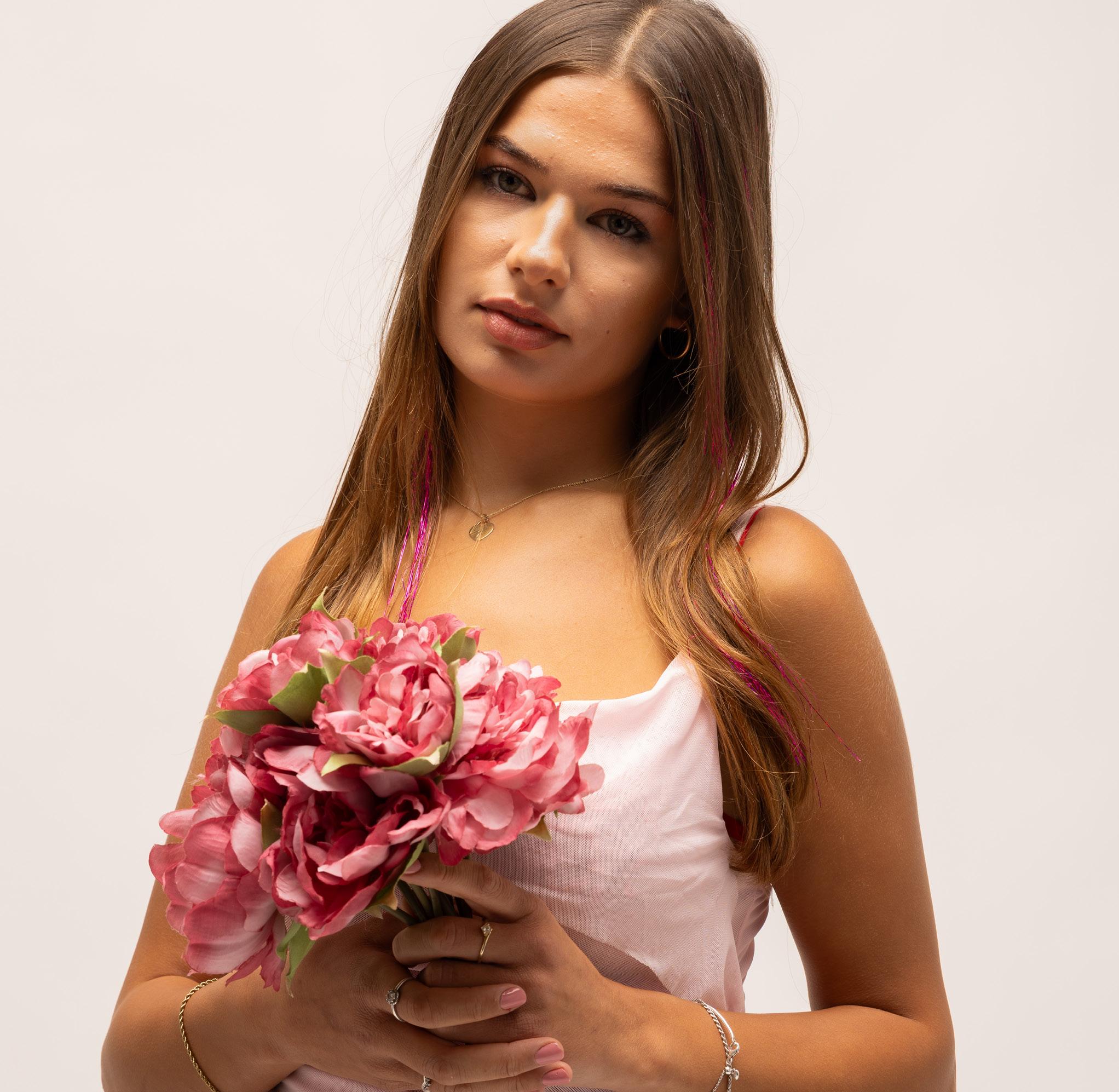
This summer has been a whirlwind for celebrity pop culture, filled with love and ‘popping the question’! From famous pop icons to Love Island stars, there are now a plethora of celebrity marriages to look forward to over the next couple of years. 2025 has not been short of romance, so let’s take a dive down memory lane and relive some of the most important love stories of the summer!
June: Dua Lipa & Callum Turner
Dua Lipa is known for her pop music but also for her glamorous Instagram feed. Anyone that follows it knows that she is the Queen of travelling, and Callum Turner, her now fiancé, is often there, the two often embarking on romantic getaways. Therefore, it was a major surprise when they got engaged and did not post anything, leaving the world to get confirmation six months later in June via an interview with Vogue.
Unlike Dua Lipa, Turner tends to keep a low profile when it comes to social media. Perhaps that is why they chose to keep their engagement a secret for so many months. Celebrities’ lives are so often more public than private, so it was likely a breath of fresh air for them to keep it to themselves for a while.
For their wedding, there would be no surprise if they chose to secretly tie the knot in a quiet ceremony with their closest family. If anything, that would be an ideal scenario, ensuring the day is just for the two of them and no one else!
July: Hayley Kiyoko & Becca Tilley
Hayley Kiyoko, singer and actress known for films such as Lemonade Mouth (2011) on Disney Channel, proposed to her long-term girlfriend Becca Tilley in July. She stated in her Instagram caption: ‘My dream girl said yes to forever...’ (@hayleykiyoko). The engagement photos star the picturesque Mediterranean in the background, with Hayley taking one knee amongst the colourful blues and whites of the Spanish setting.
Their meet-cute was an unconventional one, with Becca intending to set-up her younger sister with Hayley originally! But when her sister couldn’t make it, Becca went on the date instead. They’ve been together ever since, and what a story to tell their future family! Like their engagement, maybe their wedding too will be amongst the beautiful colours of the Mediterranean sea...
August: Taylor Swift & Travis Kelce
The whole world has had their eyes on this couple since they first started dating back in 2023. When a pop star and a famous athlete get together, of course the world will become obsessed. From watching the Kansas City Chiefs playing, to Travis hyping Taylor up at her concerts, the two are constantly supporting each other. It was only a matter of time before they reached the next step.
With over 37 million likes, their engagement post is now one of the most liked Instagram posts ever! The proposal happened in Taylor’s back garden, which Travis filled with dozens of her favourite flowers. Maybe one day Travis will reveal what he said to Taylor during this important moment, but for now, all we can do is imagine the romantic speech. Now, for the important question: will their wedding ceremony be the next Royal Wedding? Or will they choose to keep it private? Only time will tell.
September: Molly Smith & Tom Clare
Love Island All Stars winners Molly Smith and Tom Clare recently announced their engagement! Despite it happening on the 4th of September, they receive an honourable mention, especially since the proposal happened in sunny Dubai. The two have been together since they met and won Love Island All Stars in 2024, a show that challenged them with exes and re-couplings. Despite all of that, they have gone from strength to strength since they met and now are happily engaged.
The couple, on holiday for Tom’s birthday, went on a romantic evening stroll when they came across the surprise proposal on the beach. Whilst a musician played the violin, they walked down a path of rose petals and lit candles, before Tom popped the ultimate question in front of the Burj Al Arab. For all Love Island fans, it will be an exciting time when the two share their wedding with the world...
Words by: Lauren Hazeldine
Design by: Thandi Nia Carklin
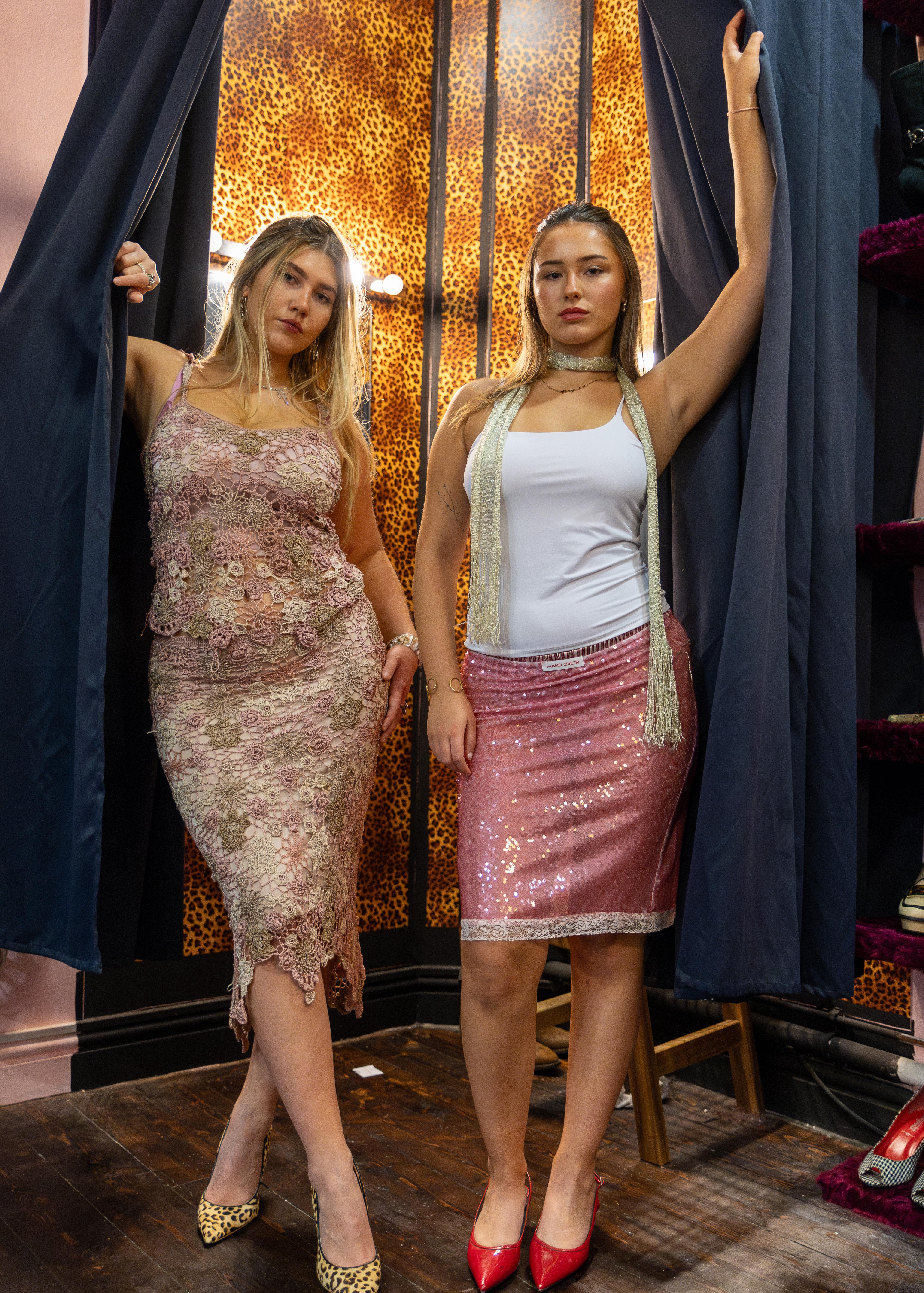
They’ve been appearing everywhere: it’s impossible to take a trip into the city without something popping up. Whether they take the form of shop takeovers or eccentric little stalls, they certainly demand attention and create a buzz. The key selling point of the pop-up is exclusivity, a short window to access this ‘experience’ before it is gone forever. You could also attribute the popularity of this trend to the aesthetics of the pop-up: the locations are often highly designed and Instagrammable, something very important to new consumers.
Fans of Finnish Children’s TV may have heard of the recent Moomin themed bubble tea pop-up shop in Bristol. The popular bubble tea company Cupp and the creators of Moomin collabed by taking over a shop in the trendy, student hotspot Park Street, and selling Moomin-themed drink. Whilst this sounds fairly reasonable, the experience itself was actually quite unique: at no point would a customer make contact with staff. The drink was ordered via a kiosk, and upon completion, the order would appear from a small window within an illustrated turret at the back of the shop. This makes for an unusually simple buying experience, allowing the customer to focus on the colourful Moomin-themed illustrations around the shop. The experience hones in on the child-like aesthetics of the Moomin world and, by changing the usual buying experience, transports customers to the land of the Moomins and therefore back to their childhood.
On a wider scale, pop-ups target a wide range of consumers. For example, a Louis Vuitton pop-up that started in New York City in January. This event targeted both younger, primarily teen and new adults, and the brand’s classic, more mature clienteles. This experience was a collaboration with Takashi Murakami, an artist known for his unique art style featuring brightly coloured illustrations of smiling flowers. The space was designed to create nostalgia through the Y2K aesthetic, acting as a reminder of a 2000s childhood for the emerging Gen Z consumers. To hone in on this aesthetic, the pop-up focused on bright colours, namely green and pink, potentially symbolising a shift from Louis Vuitton’s typical brown and beige colour schemes. The increasingly popular LV Monogram bag (the white handbag with colourful logos you may be thinking of) can also show us the beginning of this shift away from the ‘neutral tones’ aesthetic to the colourful, playful ideas of childhood the brand’s new consumers are nostalgic for. The pop-up also brought back the idea of play to customers by featuring a vending machine filled with small games, stickers and cards, another nod to the popularity of collectable items in the early 2000s (think Pokémon cards). Louis Vuitton and Takashi Murakami’s collaboration certainly makes for an interesting aesthetic, and catering to the unique experience expected of a pop-up.
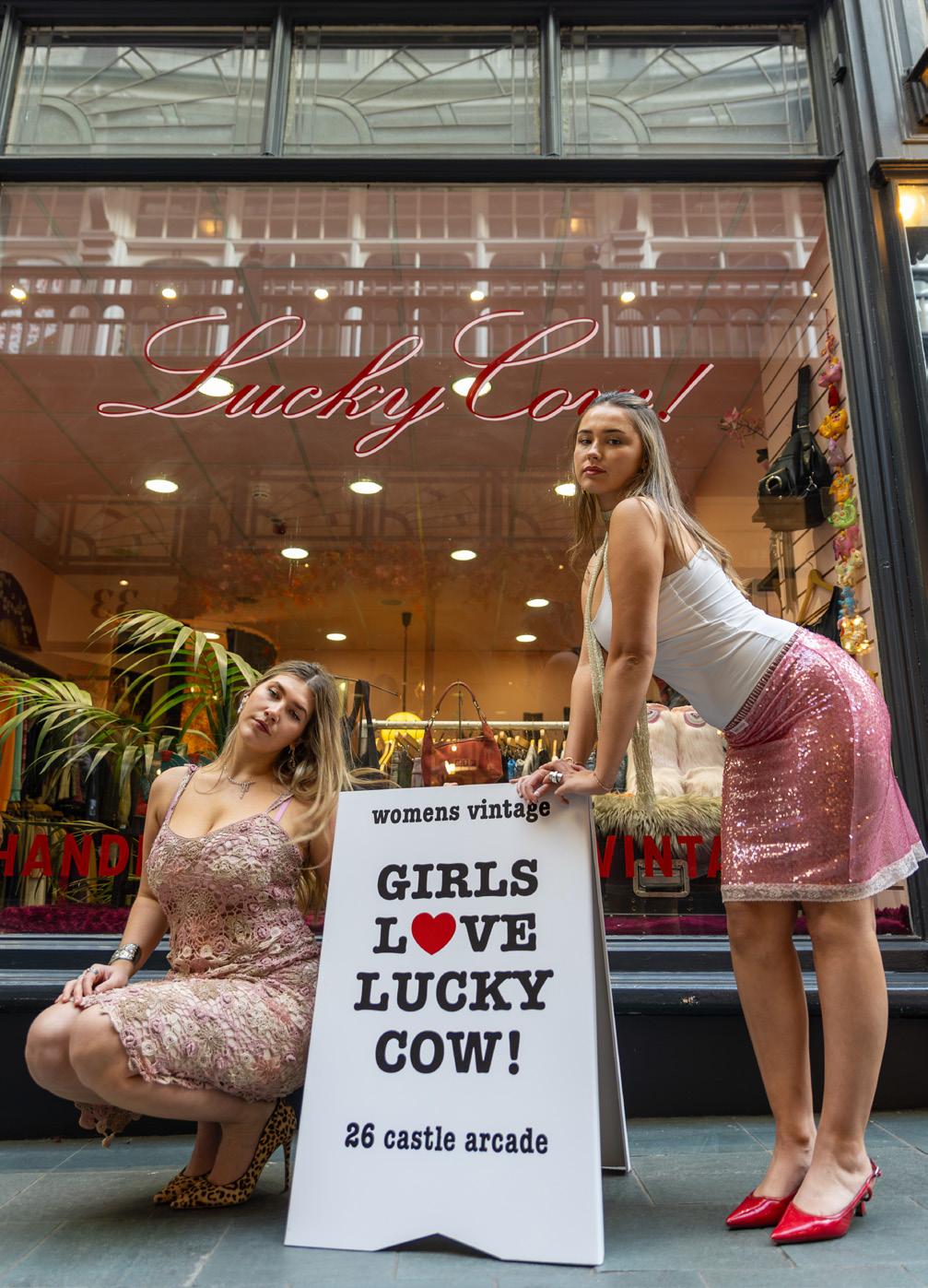
We couldn’t talk about pop-ups without mentioning vintage sales! Taking the form of touring flea markets, kilo sales, and clothesswaps, this new type of event is naturally representative of the push for sustainability within consumption. It could also be attributed to Gen Z’s rampant nostalgia, even for a time before many customers were born. The up-and-coming event organiser ‘The Big Flea’, in particular, tours the UK; renting out large warehouses to sell vintage homeware, fashion and art (free your diaries for October 26th, as this is when it will be in Cardiff!) This sort of event is made unique as it sells items that can’t be bought online, creating a lottery-like experience in which customers must rummage through rails and boxes, in the hope of something that cannot be found elsewhere.
Pop-ups worldwide cater to consumer’s desires by focusing on aesthetics and experience – often using both to create a playful, and often nostalgic, feel. The pop-up itself offers a unique experience that transcends beyond just buying a product: detaching itself from the ever-growing trend of online shopping. Pop-ups around the world are new, exciting and encourage a difference in the everyday mundane life.
Words by: Molly Derrick
The Alps. The traditional winter backdrop for royal getaways and ski resorts swarming with celebs. But in recent years have they become more accessible to the masses? And is the latest trend of summer tourism changing people’s perception of the Alps?
Spanning numerous European countries, the Alps have been known since the 18th century as a winter holiday destination, particularly for the rich and famous. On average 120 million people visit each year, with many tourists choosing to make the trip during summer. But whilst the region appeals to the likes of George Clooney and Emma Watson, who have bought second homes there, a market emerges for the average holiday-maker.
So why are the Alps so popular? The versatility of the region is likely the reason so many visit each year. During the winter, people flock to resorts to ski and snowboard. However, the summer is when the region comes to life. The scenery, including stunning lakes and breath-taking mountains, makes the Alps the perfect destination. You can relax in nature and catch up on your summer reading while your family hike up a mountain, enjoy a boat trip, and ride bikes - all before joining you in the evening for a traditional alpine dinner with a view.
Many people visit to sample Alpine tradition and culture. Folk art is particularly popular amongst tourists. For example, yodelling has become increasingly popular in recent times due to its use in The Sound of Music and songs by Chappell Roan. Other examples of folk art include the alphorn and traditional dress such as Lederhosen and Dirndls. And what holiday in the Alps would be complete without a fondue tasting?!
While the Alps are known for expensive ski resorts and fancy hotels, it is possible and incredibly popular to travel the area on a budget. Backpacking, hostel hopping, and interrailing is extremely common and there are many routes specifically
designed for this. Here is my ultimate Alps bucket list, highlighting the main tourist attractions and how to get the most out of your trip. I was fortunate to travel to the French town of Annecy a few years ago and would class it as a ‘must visit’ destination. Set on Lake Annecy with the backdrop of the Alps, this town is perfect for a summer trip with charm. I spent my week there swimming, exploring the local markets, and riding bikes around the lake. This picturesque town is the perfect place for a relaxing summer getaway.
If you’re wanting a more adventurous destination, head to Interlaken in Switzerland. Here you can hike up Harder Kulm, a mountain with stunning views and a panoramic restaurant at the summit. Like the sound of a restaurant with a view but not so much the 1,321 metre hike? There is a funicular that runs to the top! If you’re heading to Interlaken, be sure to take the train from the Swiss capital Bern to catch a glimpse of the incredible landscapes.
If VIP hotspots and celebrity sightseeing is more your thing then St Moritz is the place to be. Whilst St Moritz is known as a winter ski resort, it was actually designed for summer trips. Celebrities such as Alfred Hitchcock, Princess Diana, and Paris Hilton have been spotted frequently enjoying time in this Swiss town.
Finally, for a cultural experience head to Salzburg. The birthplace of Mozart and the setting of The Sound of Music has much to offer if you want to learn about the rich history of the Alps.
No longer just a winter playground for the rich and famous–visit the Alps next summer!
Words by: Milly Mohamed Design by: Adriana Coulter
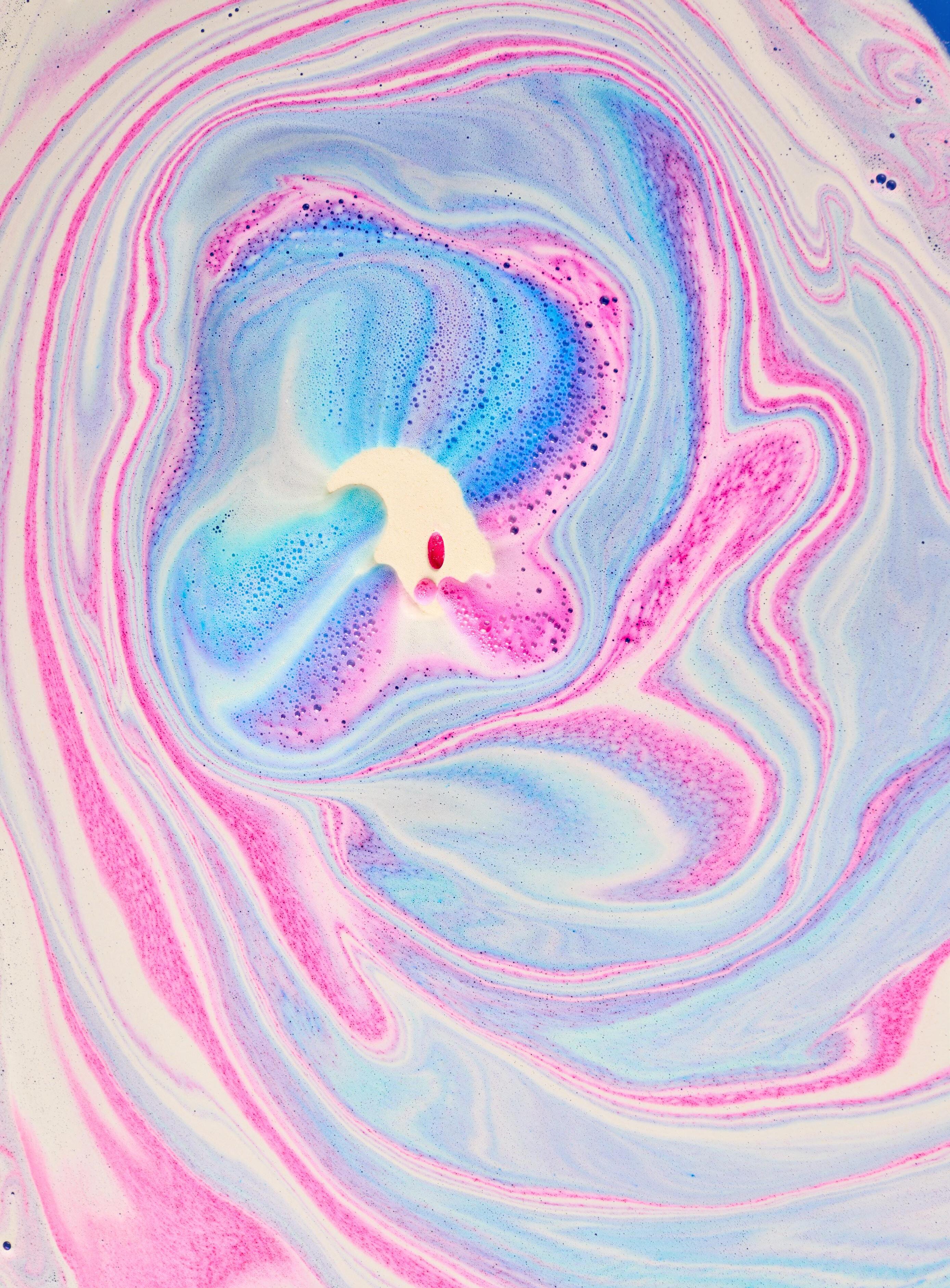
Have you ever heard of anyone who dislikes Lush? Because I haven’t. Lush is renowned for transforming the retail world and delivering an unparalleled experience to its customers and staff. It’s always a pleasure going into a shop and smelling all the different perfumes and trying their new products. Last month, deputy editor Molly and I were invited to discover Lush’s new winter products and interview Kasey Swithenbank – the Lush head of retail for the UK&I. This year at Quench, I aim to provide a more circular experience for readers, offering them opportunities beyond writing. This initiative complements ‘Quench Shops’, my new effort to support student businesses. I got to ask some questions, which should be encouraging to any student hoping to pursue entrepreneurial affairs or going into a business career that deviates from their studies.
Interviewing Kasey was an incredible insight into the world of retail and the logistics behind creating such wonderful experiences for the customer. Kasey has had a very interesting journey, starting with her studies at Cardiff University. She has a BA in Religion from Cardiff University and began working for Lush during her final year as a student. She began as a sales associate and worked her way up to retailer and is now head of retail. She is a very inspirational Welsh businesswoman who fights for workers’ rights and a positive future for retailers.
Going from studies in Religion to working with Lush is a big jump. I know many students find it difficult to know what they want to do after their studies and are afraid of going into an unrelated career field. Kasey explained that it just felt right for her. She loved studying Religion and felt that sense of learning when working in Lush. She got to practice her passion for studying and teaching by being on the shop floor. She would tell students not to panic. “You have plenty of years after you graduate and are already learning new organisational and empathy skills!”

Lush is known for being a sustainable brand and having strong cultural and ethical standards. With the recent closure of Lush UK stores in solidarity with the famine in Gaza. We asked Kasey what Lush’s top initiatives were and how they transmit these strong values to staff and then to customers. “It’s so important to stay true to your values and Lush has always done that. That goes from how we source our packaging to how we recycle it. We also source our ingredients and seek out growers from all over the world and support much smaller cooperatives as a result. By buying our products, you are also supporting a small group of individuals from across the globe. That’s how we definitely stand out.” She put emphasis on clear communication. It’s nice to put a value on a website but transmitting those to staff directly is very important. She explained how the Gaza campaign actually came from a staff member. She encourages staff to reach out about what they’re passionate about. That will naturally filter down to everyone interacting with Lush.
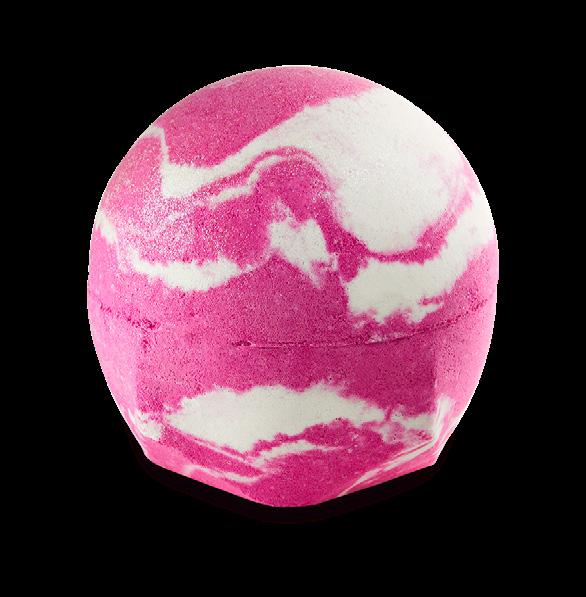
Kasey has previously urged the UK government to put some priority on high street retailers. Lush constantly manages to evolve with the landscape of retail. An ongoing trend at the moment is TikTok Shop. The platform is quite interesting to me, and it is quite popular among students. I wanted to get her opinion on how Lush deals with new platforms like TikTok Shop, which threaten high-street retailers. Kasey believes that Lush stays true to its roots. 70% of Lush sales come from physical retailers, so she’d argue the high street isn’t dying at all. Nevertheless, it’s still important to remember the digital landscape. She kindly added that Lush isn’t on social media. They believe it’s not a positive space and I must agree. I believe this implicitly influences Lush’s positive reputation.
“It’s so important to stay true to your values and Lush has always done that.”
With the new announced tram system for Cardiff and Kasey’s previous statements on how good, reliable public transport systems are essential to retailers and the economy as a whole. I asked her how she felt about Cardiff transport. She agreed there were improvements since she was a student. She explained how some train lines had been electrified but unfortunately, her regularly taken train from Abervale had not been electrified. There’s definitely room for improvement and the council should think about investing in transport, she added.
Words by: Charlotte Hardie-Watts
Design by: Samir Ait-Kaci & Charlotte Hardie-Watts

As my new initiative ‘Quench Shops’ is coming along (turn to page 47), I wanted to hear from Kasey about any advice she’d have for student entrepreneurs or any students aspiring to start a business. “Firstly, that’s such a lovely initiative, really well done! I’d say be brave and sometimes – it’s human nature, but we tend to strive for perfection. When you’re working on something and you’re at 80%, in the time it takes to get to 100% of a perfect project, that product could already be making you money. You can alter it as you go. Be ready to take risks and not always strive for perfection.”
To finalise our interview, we asked Kasey which Lush bath bomb she’d be. “A little sneak peek, but staff around the world were invited to design a product. A group of Welsh members submitted the idea to have a St David’s range made. I submitted a product for it and it’s currently being made. To give you an idea, it’s very homely and plays on a very strong Welsh word!” I shared one of my own ideas for Quench that will come along this year that aligns with her answer, so stay tuned!
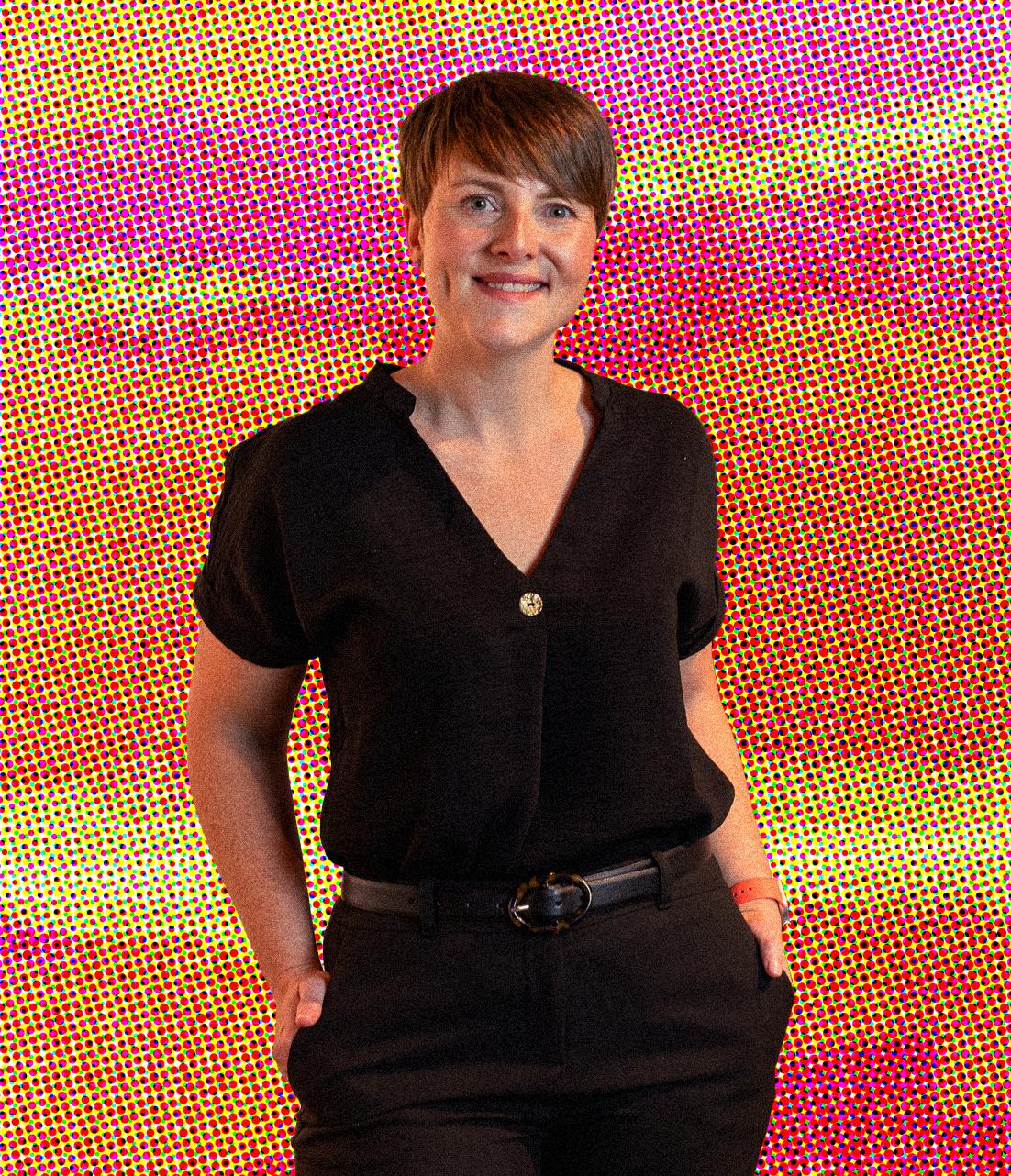


Reverie Yugen is a handmade jewellery brand inspired by the quiet beauty of nature. Each piece is carefully crafted by hand, drawing on the shapes, colours, and textures of flowers, the sea, and natural landscapes. My goal is to create accessories that feel delicate and unique, while carrying a sense of joy and meaning.
My love for jewellery has always been personal—I enjoy wearing necklaces and bracelets myself, because they can instantly lift my mood and make an ordinary day feel brighter. That feeling became one of the main inspirations for starting Reverie Yugen during the summer break. I wanted to create pieces that could give others the same spark of confidence and happiness that jewellery has always given me. Since moving from Japan to the UK, I’ve been surrounded by new environments and cultures that continue to inspire my designs. No two pieces are ever the same, which means every customer receives something truly one-of-akind.
Through Reverie Yugen, I hope my jewellery can bring a little piece of nature’s elegance into everyday life, making each day feel more meaningful and special. Instagram: @reverie_yugen.jewelry
If you’re a student who wants cute nails without spending half your student loan, this is your sign to come to me. I run a little nail business — it’s super chill and comfy. We can chat about life, listen to music, or binge Netflix while I do your nails, and I’ll always make sure you leave feeling confident and happy.
I first started doing nails when my mum wouldn’t let me go to a salon, so I taught myself. Honestly, I was awful at the start — and my first few sets were disasters — but I kept practising, and now I get to make people feel good about themselves every week :)
I know student life can be expensive, so I keep my prices low (sets start at just £25!) without cutting corners on quality. Whether you want something simple and clean or bold and creative, I’ll make sure you love the final look!
Ready to look like a baddie on a budget? DM me on Instagram @nails.by.anusha to book your appointment!
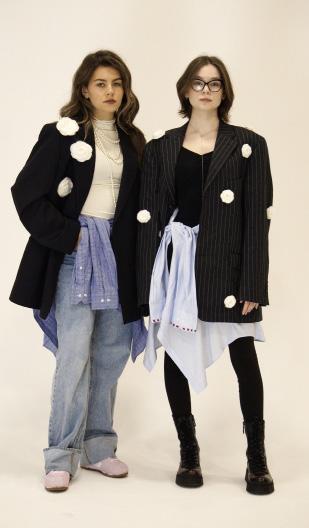
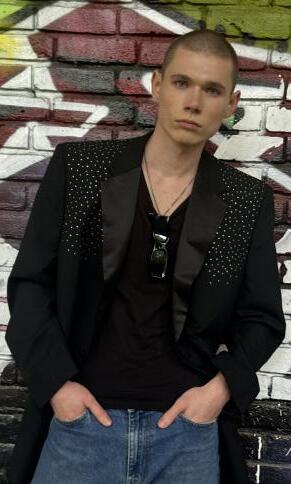
Design by: Molly James

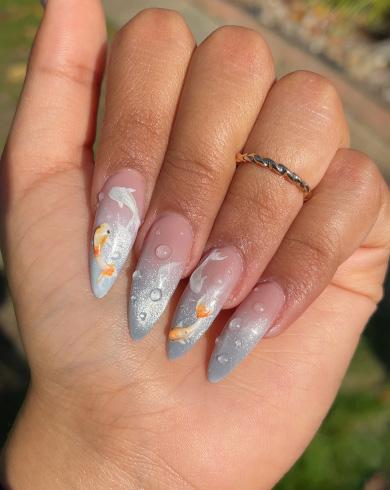
Nenko is an upcycled fashion brand that transforms vintage blazers into unique statement pieces. Each item is sourced from vintage fairs, theatre wardrobes, and charity shops across Europe, many of them over 20 years old.
What started as a personal project of giving a second life to old garments during the Ukraine war has evolved into a brand with a clear identity — quiet luxury, sustainability, and individuality.
Over the past year, Nenko has showcased its collections at fashion shows, hosted pop-ups in London, collaborated with influencers, and been featured in magazines. The brand continues to grow by expanding into accessories and preparing for international events, while staying true to its ethos: style in every stitch, sustainability in every choice. Instagram: @nenko.uk
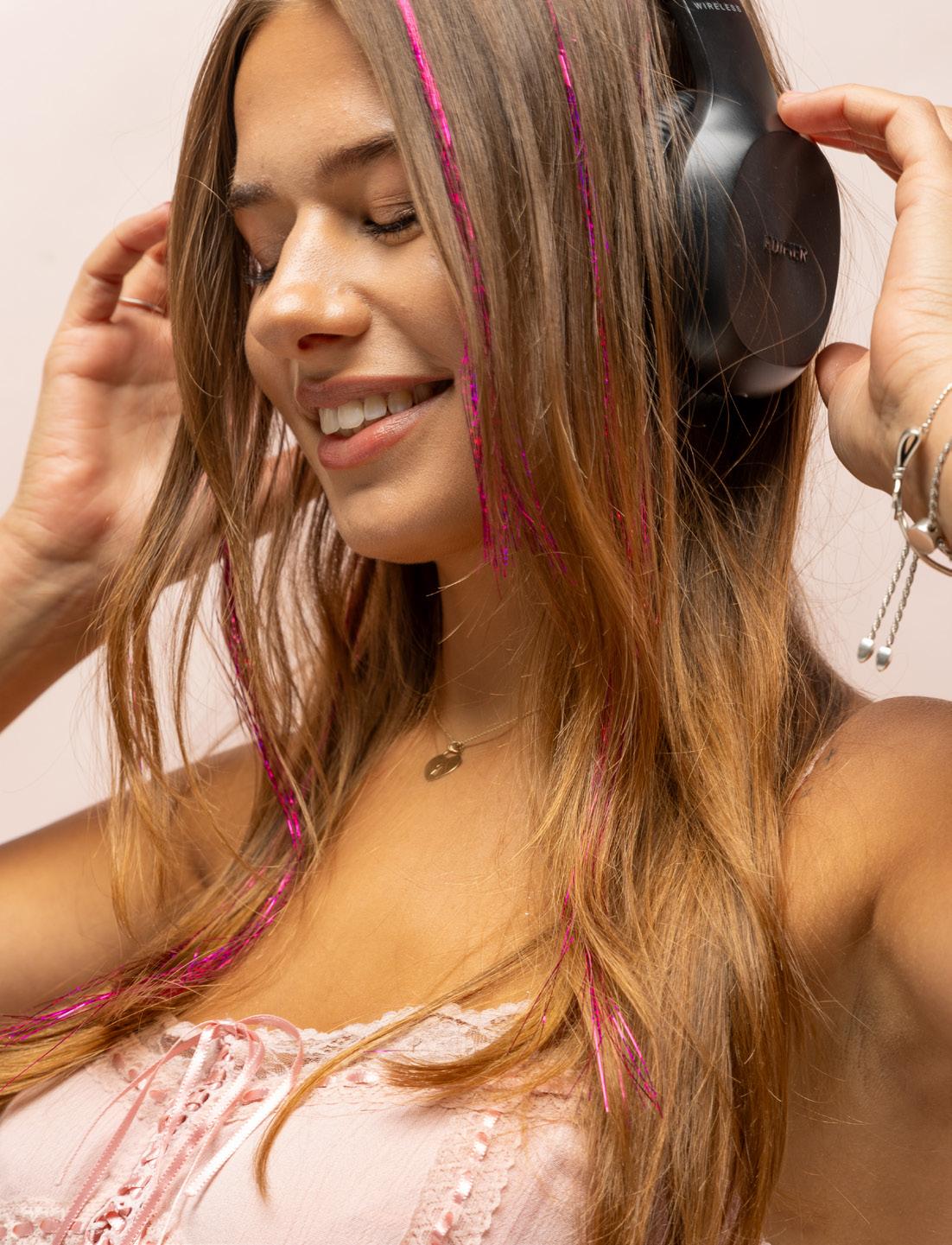
byw drwy gerddoriaeth bop